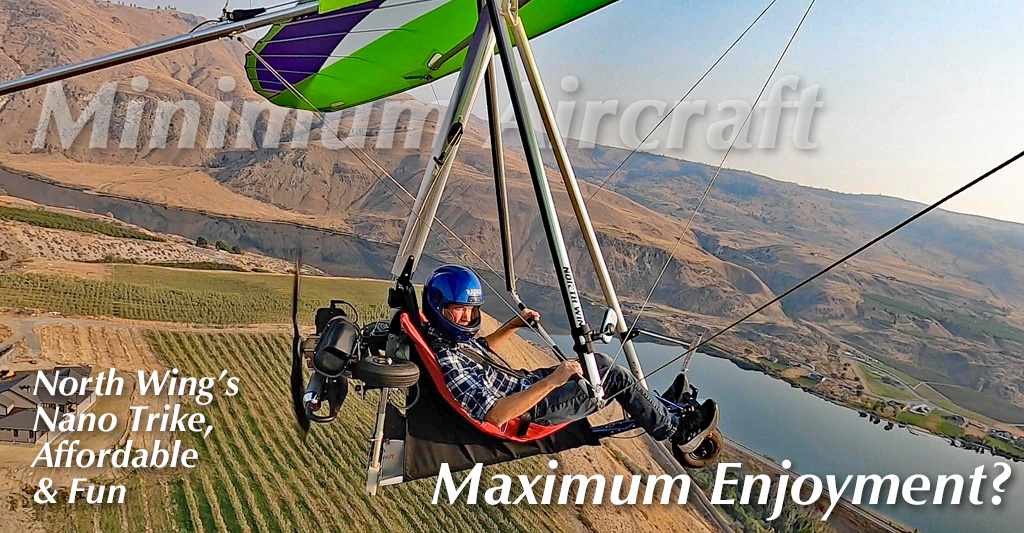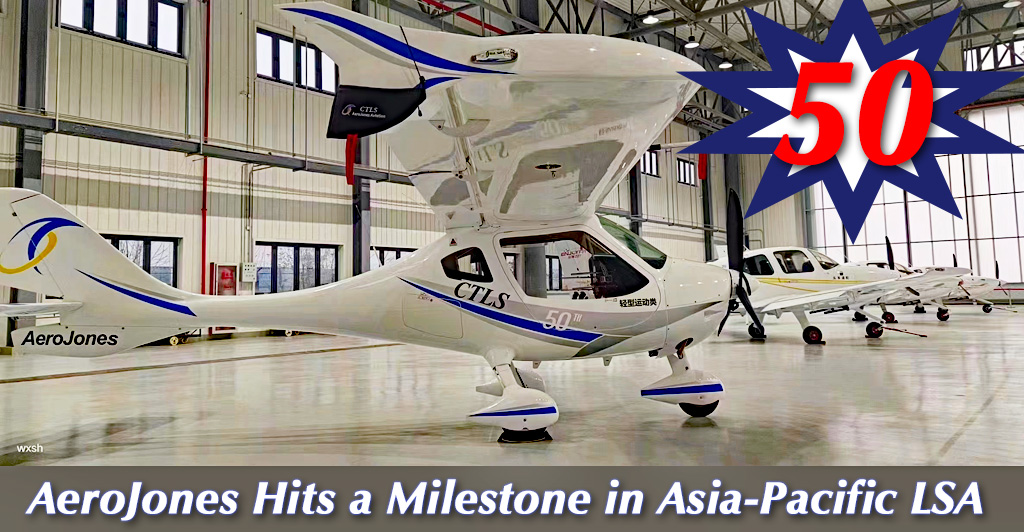
Sun ‘n Fun 2023 means spring and helps kick off a season of recreational flying. As the year progresses and Oshkosh arrives, we have our fingers crossed for FAA to issue the Mosaic Notice of Proposed Rule Making (NPRM). At AirVenture 2022, we were promised the draft proposal by August of this year. The following month FAA’s Sport Pilot / Light-Sport Aircraft regulation will celebrate its 19th birthday. That means LSA will turn 20 years old in 2024 and by the end of the year we should have Mosaic. It has been a fast and furious twenty years! In those two decades, LSA have arrived and flown in nearly every country on Earth. A few years ago, I evaluated total worldwide market size — see this article or this chart — for LSA or LSA-like aircraft and found more than 66,000 aircraft worldwide. Eight years later, that number may be 80,000 aircraft although I made no attempt to repeat that time-consuming global survey*.


 The following month FAA's Sport Pilot / Light-Sport Aircraft regulation will celebrate its 19th birthday. That means LSA will turn 20 years old in 2024 and by the end of the year we should have Mosaic.
It has been a fast and furious twenty years!
The following month FAA's Sport Pilot / Light-Sport Aircraft regulation will celebrate its 19th birthday. That means LSA will turn 20 years old in 2024 and by the end of the year we should have Mosaic.
It has been a fast and furious twenty years!
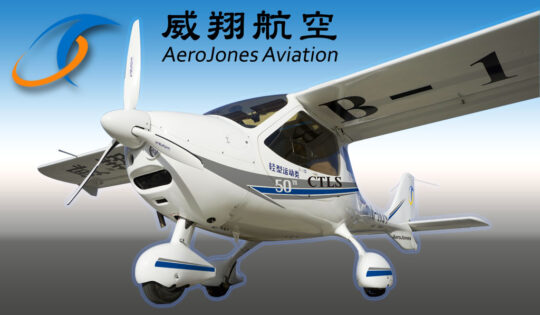 In those two decades, LSA have arrived and flown in nearly every country on Earth.
A few years ago, I evaluated total worldwide market size — see
In those two decades, LSA have arrived and flown in nearly every country on Earth.
A few years ago, I evaluated total worldwide market size — see 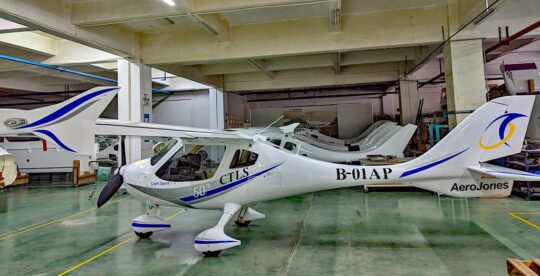 We know Chinese money is invested in (or wholly owns) many of general aviation's top brands, including Cirrus Design, Continental Motors, Mooney, Diamond, Icon Aircraft, and others. However, money flowing to those companies does not support sales in Asia-Pacific. Most of those enterprises are mainly active in the USA and have only small operations (if any) in China or around the Pacific nations.
However, that is slowly changing. Since my travel around China in late 2017, many changes have occurred.
We know Chinese money is invested in (or wholly owns) many of general aviation's top brands, including Cirrus Design, Continental Motors, Mooney, Diamond, Icon Aircraft, and others. However, money flowing to those companies does not support sales in Asia-Pacific. Most of those enterprises are mainly active in the USA and have only small operations (if any) in China or around the Pacific nations.
However, that is slowly changing. Since my travel around China in late 2017, many changes have occurred.
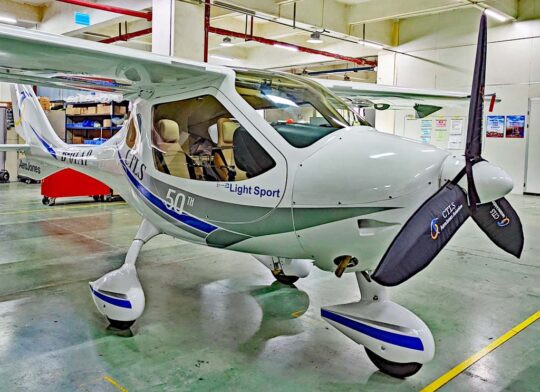 AeroJones has a patient investor with a longer horizon and the company has rewarded him by steadily increasing business.
While those developments continue, the Taiwan-owned company has clearly demonstrated their ability to build airplanes. A tour of AeroJones' production facility showed off a modern, orderly shop with well-trained personnel building CTLS aircraft.
AeroJones has a patient investor with a longer horizon and the company has rewarded him by steadily increasing business.
While those developments continue, the Taiwan-owned company has clearly demonstrated their ability to build airplanes. A tour of AeroJones' production facility showed off a modern, orderly shop with well-trained personnel building CTLS aircraft.
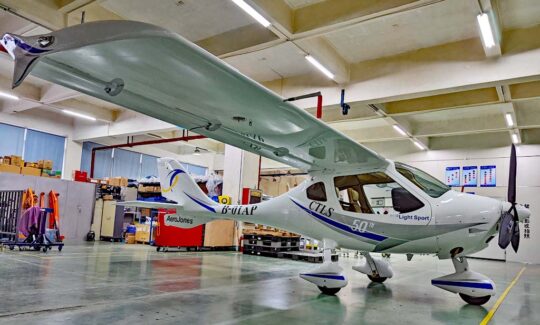 AeroJones was established in 2013 and is completing its 10th year in business, a noteworthy accomplishment it will celebrate officially in 2023.
A decade ago, AeroJoes signed a contract with German CTLS developer Flight Design. After receiving extensive training from company engineers, AeroJones turned on their factory machinery. Gaining government approval — a kind of Type Certificate is required by CAAC, China's FAA — took many months. This was all new ground for both company and officials.
AeroJones was established in 2013 and is completing its 10th year in business, a noteworthy accomplishment it will celebrate officially in 2023.
A decade ago, AeroJoes signed a contract with German CTLS developer Flight Design. After receiving extensive training from company engineers, AeroJones turned on their factory machinery. Gaining government approval — a kind of Type Certificate is required by CAAC, China's FAA — took many months. This was all new ground for both company and officials.
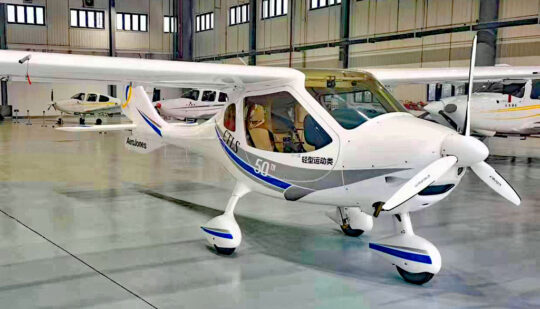 In those ten years, the AeroJones team learned to build a high-quality Light-Sport Aircraft and do so with repeatability. The company recently completed its #50 CTLS.
"We are #2 in China and #1 in the World," said Hsieh "Tai" Chi-Tai in news last year. Another China producer, Sunward with its
In those ten years, the AeroJones team learned to build a high-quality Light-Sport Aircraft and do so with repeatability. The company recently completed its #50 CTLS.
"We are #2 in China and #1 in the World," said Hsieh "Tai" Chi-Tai in news last year. Another China producer, Sunward with its 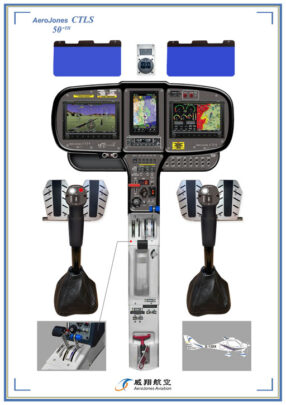 Like all such producers, AeroJones does their primary assembly work using non-airport facilities. They then disassemble, transport, and reassemble their aircraft at an airport some hours away. At that location, training is conducted and newly-manufactured aircraft are test flown.
Like all such producers, AeroJones does their primary assembly work using non-airport facilities. They then disassemble, transport, and reassemble their aircraft at an airport some hours away. At that location, training is conducted and newly-manufactured aircraft are test flown.
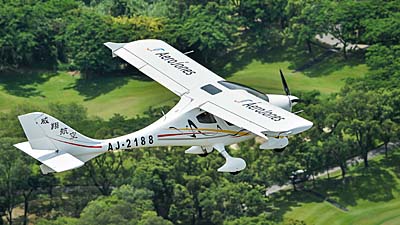 Until recently, that is the method used to deliver all light aircraft in China. It's a large country and truck delivery adds a lot of extra work and time.
Last year. AeroJones broke new ground and air-ferry-delivered a new CTLSi to a customer (
Until recently, that is the method used to deliver all light aircraft in China. It's a large country and truck delivery adds a lot of extra work and time.
Last year. AeroJones broke new ground and air-ferry-delivered a new CTLSi to a customer (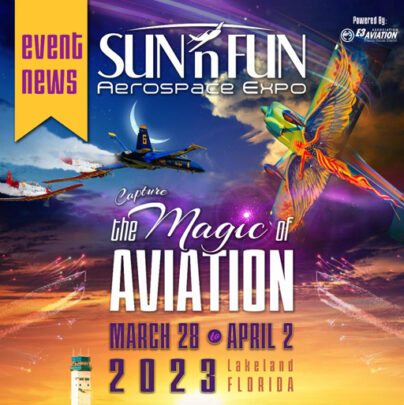 With a delicious 10-day spacing between them — time to rest up a bit after a vigorous week — later in April comes
With a delicious 10-day spacing between them — time to rest up a bit after a vigorous week — later in April comes 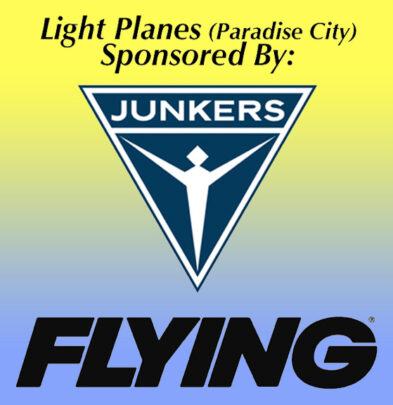 Organizers of the 49th event announced major plans for this popular airshow that kicks off the recreational flying season. My focus is on LSA, Sport Pilot kits, and ultralights. At Sun 'n Fun, that means Paradise City, where big things are happening. You would not be wrong if you scanned this article and saw increased interest in this part of the overall Sun 'n Fun grounds.
Organizers of the 49th event announced major plans for this popular airshow that kicks off the recreational flying season. My focus is on LSA, Sport Pilot kits, and ultralights. At Sun 'n Fun, that means Paradise City, where big things are happening. You would not be wrong if you scanned this article and saw increased interest in this part of the overall Sun 'n Fun grounds.
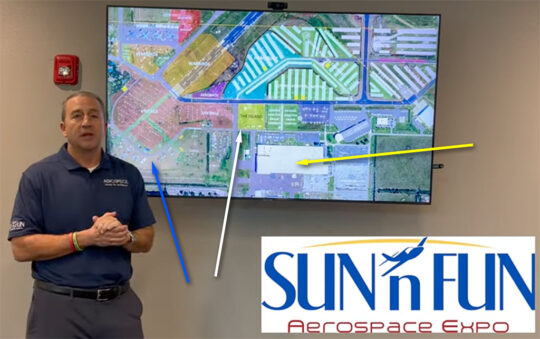
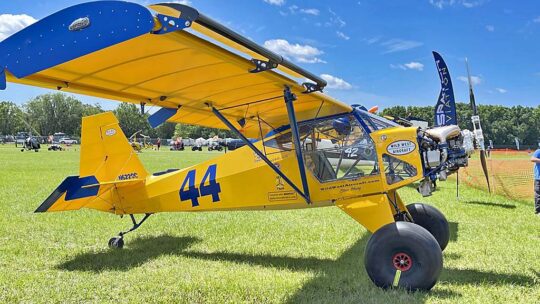
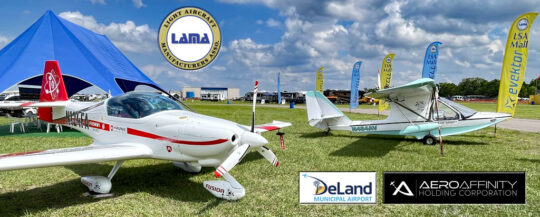 Perhaps it is the potent combination of new leadership and bubbling pilot energy. Perhaps new attention is related to the coming Mosaic regulation. No matter, the area known to many readers as Paradise City or the Ultralight Area — or Light Planes, as Sun 'n Fun now labels it — appears newly energized for 2023. This follows a solid year in 2022 when the overall market sector I follow was
Perhaps it is the potent combination of new leadership and bubbling pilot energy. Perhaps new attention is related to the coming Mosaic regulation. No matter, the area known to many readers as Paradise City or the Ultralight Area — or Light Planes, as Sun 'n Fun now labels it — appears newly energized for 2023. This follows a solid year in 2022 when the overall market sector I follow was 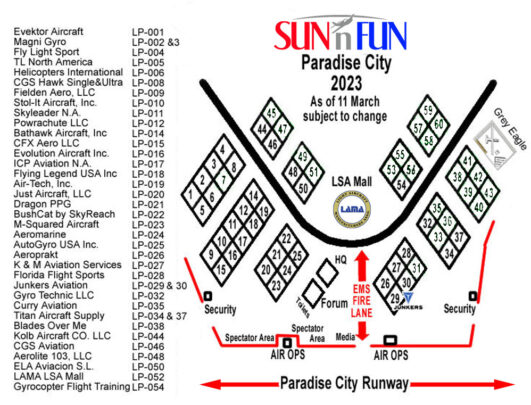 The other sponsor is a new aircraft manufacturer,
The other sponsor is a new aircraft manufacturer, 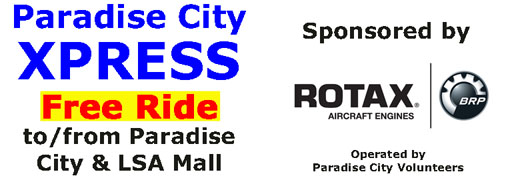 Rotax Aircraft Engines
Rotax Aircraft Engines https://youtu.be/jeLblxjyxGo
https://youtu.be/jeLblxjyxGo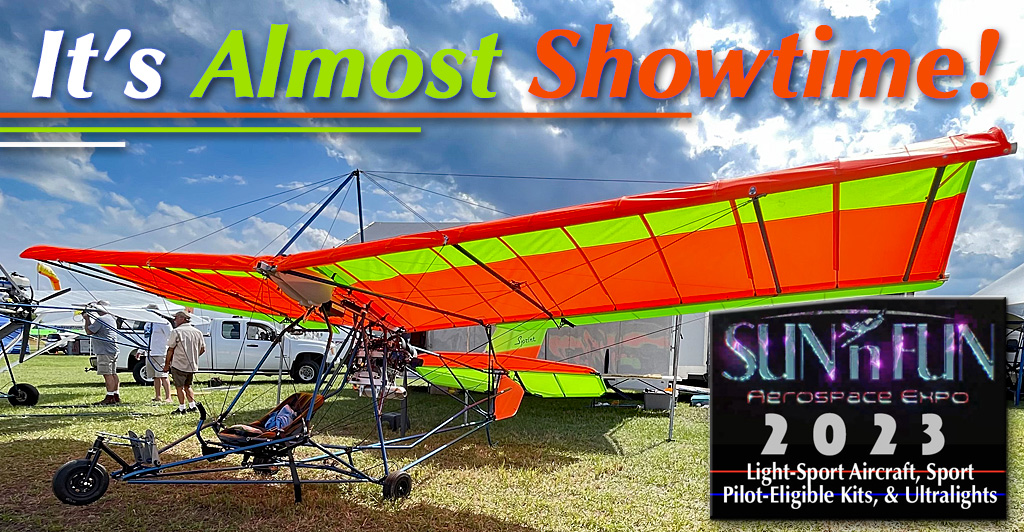
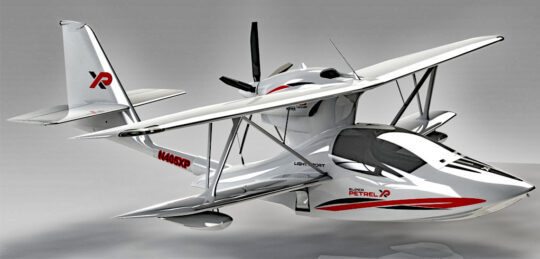 Super Petrel has a long history; some 400 are flying around the world. In addition, the current producer,
Super Petrel has a long history; some 400 are flying around the world. In addition, the current producer, 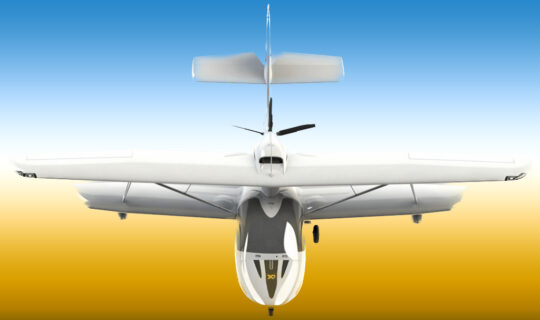 The timing was perfect as Rodrigo has always said, “You begin with the engine and build the aircraft around it.”
Besides the more potent engine, Scoda engineers have been busy. The latest version shows several improvements.
The timing was perfect as Rodrigo has always said, “You begin with the engine and build the aircraft around it.”
Besides the more potent engine, Scoda engineers have been busy. The latest version shows several improvements.
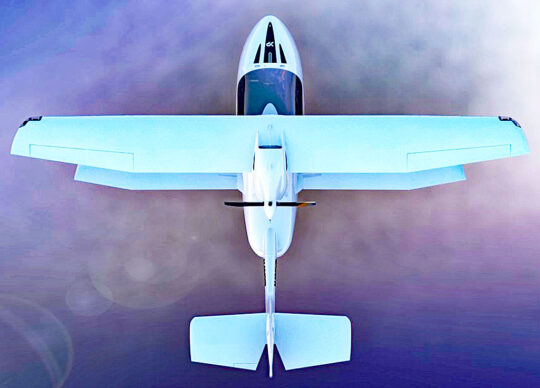 Larger tires with
Larger tires with 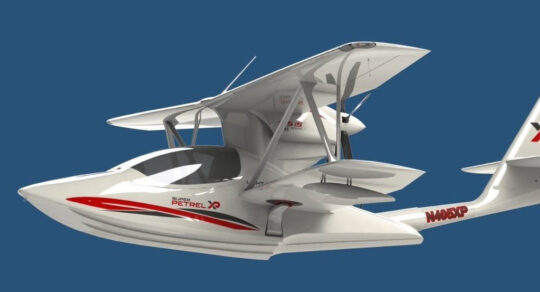
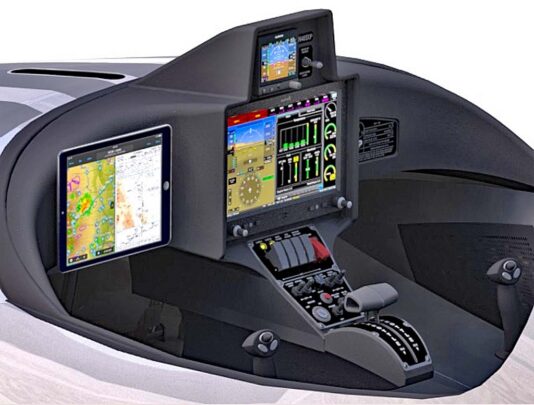 The fuel system now has two separate header tanks located behind the baggage compartment resulting in a 60% increase in capacity. On-board fuel has been increased as well.
"Remarkably, the aircraft empty weight is nearly the same as the current Super Petrel LS model with Rotax 914 at 870 pounds," said Roger. "The ballast water system now has a gauge on the G3X along with a panel switch to add or remove water while while operating the aircraft on the water," he added.
The landing gear is electrically actuated and hydraulically operated with a mechanical release behind the pilot seat. The doors are gone and replaced by the full canopy. The canopy can be completely operated by hand or, once unlocked, operated by a hydraulic assist. Visibility has been greatly improved with the new canopy design.
The fuel system now has two separate header tanks located behind the baggage compartment resulting in a 60% increase in capacity. On-board fuel has been increased as well.
"Remarkably, the aircraft empty weight is nearly the same as the current Super Petrel LS model with Rotax 914 at 870 pounds," said Roger. "The ballast water system now has a gauge on the G3X along with a panel switch to add or remove water while while operating the aircraft on the water," he added.
The landing gear is electrically actuated and hydraulically operated with a mechanical release behind the pilot seat. The doors are gone and replaced by the full canopy. The canopy can be completely operated by hand or, once unlocked, operated by a hydraulic assist. Visibility has been greatly improved with the new canopy design.
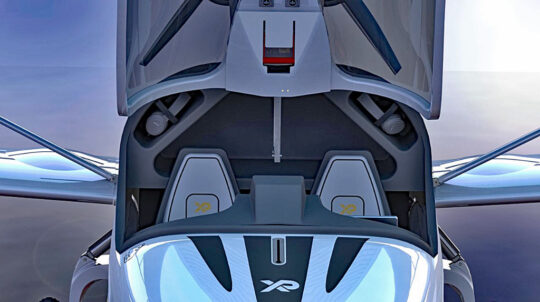 "In the beginning we were offering the aircraft with either the Rotax 912iS or the 915iS engines," Roger recalled. Yet, "All twelve aircraft sold thus far have been the 141-horsepower 915iS engines. We decided to take the 912iS off the table."
"In the beginning we were offering the aircraft with either the Rotax 912iS or the 915iS engines," Roger recalled. Yet, "All twelve aircraft sold thus far have been the 141-horsepower 915iS engines. We decided to take the 912iS off the table."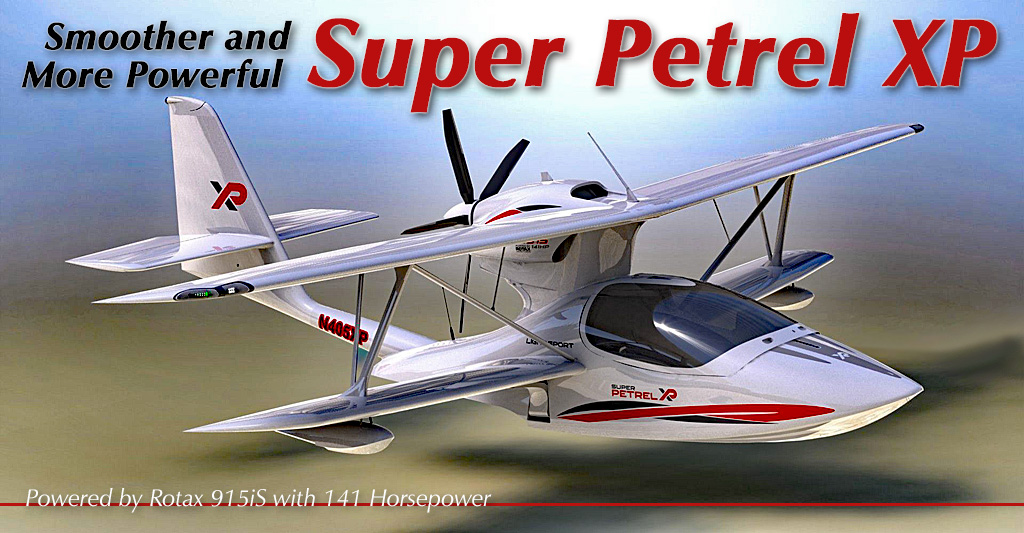
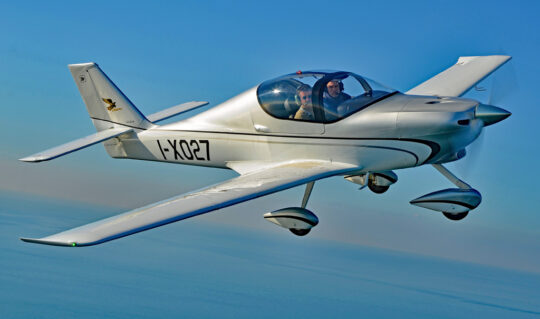 How does that deal sound? You buy a subscription for $40 — which you should get anyway — and you are automatically entered in the prize drawing for an aircraft worth $200,000 or more. If you give a friend a gift subscription, you get an additional entry, and you can give up to 10 gifts. Somebody is going to win and the odds are fantastically better than any state lottery. You won't be competing against millions of others. In my mind, winning a free airplane sounds like a great way to start a new year! Even if you don't win, you'll get a beautiful aviation magazine each month.
How does that deal sound? You buy a subscription for $40 — which you should get anyway — and you are automatically entered in the prize drawing for an aircraft worth $200,000 or more. If you give a friend a gift subscription, you get an additional entry, and you can give up to 10 gifts. Somebody is going to win and the odds are fantastically better than any state lottery. You won't be competing against millions of others. In my mind, winning a free airplane sounds like a great way to start a new year! Even if you don't win, you'll get a beautiful aviation magazine each month.
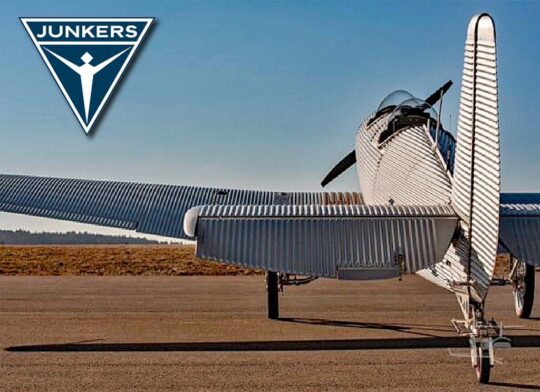 This year our favorite recreational flying area of the Lakeland show is sponsored by two leading names in aviation. Flying magazine is a sponsor of Paradise as is Junkers Aircraft.
You know the magazine but Junkers, though the brand may sound familiar, seems to recall an earlier time. Indeed, the storied German name has been around nearly a century, since the early days of aviation. Now… they're back and they are coming to America!
This year our favorite recreational flying area of the Lakeland show is sponsored by two leading names in aviation. Flying magazine is a sponsor of Paradise as is Junkers Aircraft.
You know the magazine but Junkers, though the brand may sound familiar, seems to recall an earlier time. Indeed, the storied German name has been around nearly a century, since the early days of aviation. Now… they're back and they are coming to America!
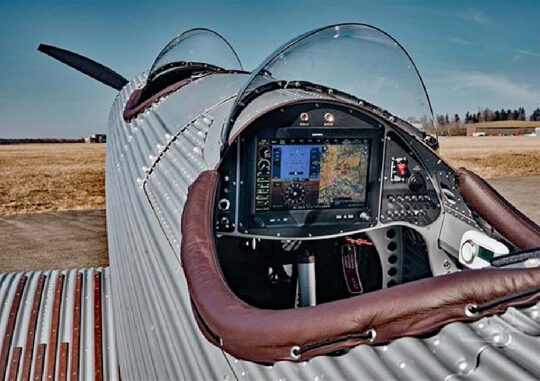 Welcome to Junkers and their American importer and partner,
Welcome to Junkers and their American importer and partner, 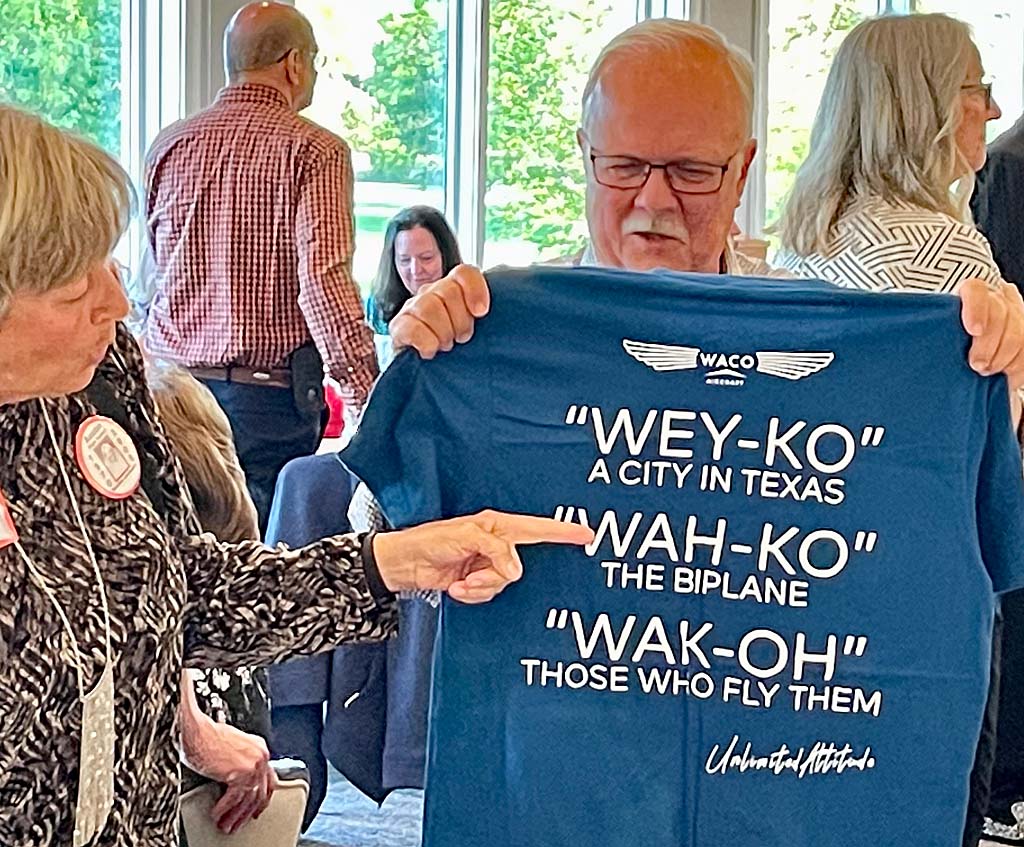
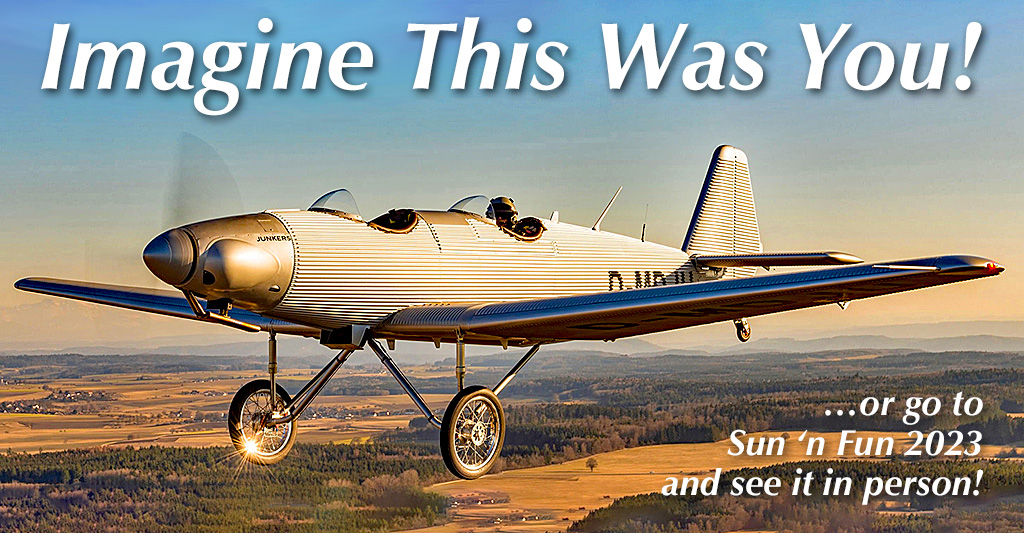
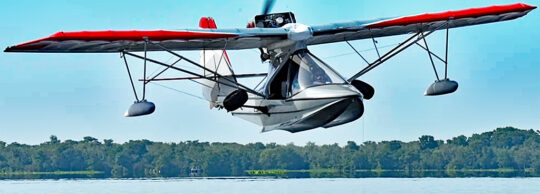 Who cares about boats (or seaplanes) in the dead of winter? Well, what better way to endure icy streets and frigid temperatures than to go look at boats and dream of using them come summer — Plan Ahead!
As with airplanes, boats can't be built overnight, so ordering early ensures that when the lakes finally do open up, fun starts quickly thereafter.
Who cares about boats (or seaplanes) in the dead of winter? Well, what better way to endure icy streets and frigid temperatures than to go look at boats and dream of using them come summer — Plan Ahead!
As with airplanes, boats can't be built overnight, so ordering early ensures that when the lakes finally do open up, fun starts quickly thereafter.
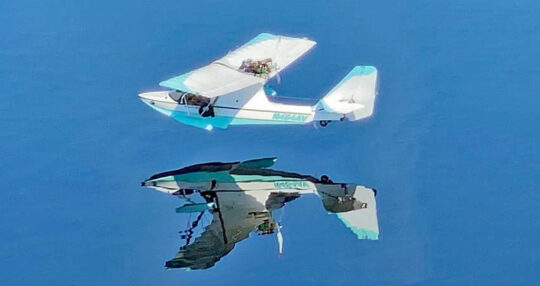 Aventura has been in operation for many years and has hundreds of their aircraft flying. These were produced by different business operations over the years but the company is in its most stable form today under the leadership of Alex Rolinski.
Recently,
Aventura has been in operation for many years and has hundreds of their aircraft flying. These were produced by different business operations over the years but the company is in its most stable form today under the leadership of Alex Rolinski.
Recently, 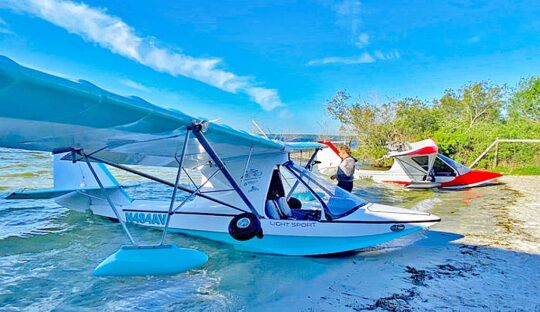 The company's Aventura II seaplane "is a versatile aircraft that is designed for recreational and commercial purposes, with safety requirements." Alex listed several worthy reasons to consider their Aventura:
Water Operations: "This allows for access to remote locations," wrote Alex, "including the ability to explore areas that are difficult to reach by other means of transportation, providing you with a beautiful experience, different from any other airplane operation!"
I add an argument that landable bodies of water outnumber airports by at least ten times and if you include every body of water that might permit an emergency landing, the number goes off the charts. You can safely land an amphibious seaplane in many more places.
Short takeoff and landing (STOL) capability: "Aventura II seaplane can take off and land in relatively short distances, making it useful for operations in areas with limited runway space." See specifications below.
The company's Aventura II seaplane "is a versatile aircraft that is designed for recreational and commercial purposes, with safety requirements." Alex listed several worthy reasons to consider their Aventura:
Water Operations: "This allows for access to remote locations," wrote Alex, "including the ability to explore areas that are difficult to reach by other means of transportation, providing you with a beautiful experience, different from any other airplane operation!"
I add an argument that landable bodies of water outnumber airports by at least ten times and if you include every body of water that might permit an emergency landing, the number goes off the charts. You can safely land an amphibious seaplane in many more places.
Short takeoff and landing (STOL) capability: "Aventura II seaplane can take off and land in relatively short distances, making it useful for operations in areas with limited runway space." See specifications below.
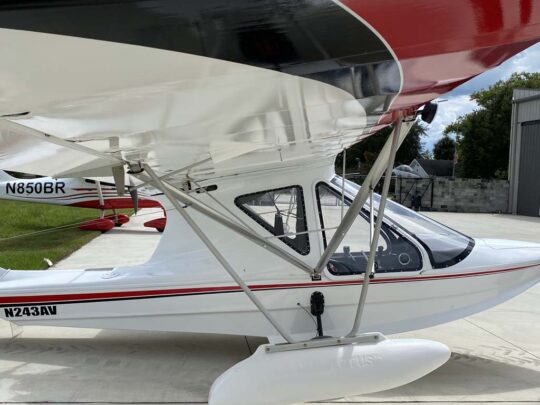 Durability and reliability: "Aventura is built with high-quality materials and is designed to withstand the rigors of operating in various environments."
Safety: "Aventura models are equipped with multiple safety features and are designed to meet or exceed industry safety standards, besides a faultless history of accidents. This airplane never had a structural failure in more than 20 years of operation," reported Alex.
Utility: "Aventura II an be used for a variety of purposes, such as recreation, sightseeing, fishing, wildlife observation, and more."
Durability and reliability: "Aventura is built with high-quality materials and is designed to withstand the rigors of operating in various environments."
Safety: "Aventura models are equipped with multiple safety features and are designed to meet or exceed industry safety standards, besides a faultless history of accidents. This airplane never had a structural failure in more than 20 years of operation," reported Alex.
Utility: "Aventura II an be used for a variety of purposes, such as recreation, sightseeing, fishing, wildlife observation, and more."
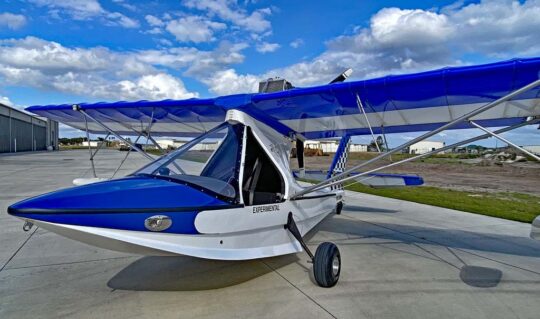 Affordable: "Aventura II is fuel-efficient, keeping operating costs lower. The Kit is the most affordable seaplane in the market, and takes around 250 hours to build."
Customizability: "Aventura II can be configured to suit a variety of different needs, with options such as panels (from analog to full glass), wheels, skis, and six engine options."
Maneuverability: "Aventura models are highly maneuverable, which allows for precise control and handling in a variety of different conditions."
Comfort: "Aventura II is designed to provide a comfortable and enjoyable flying experience, with features such as a spacious cabin with or without windows that offer excellent visibility."
Alex believes — and my own experience agrees with his view — that a seaplane like Aventura II can open up many new possibilities for adventure, access to remote areas, and the ability to explore new places.
Affordable: "Aventura II is fuel-efficient, keeping operating costs lower. The Kit is the most affordable seaplane in the market, and takes around 250 hours to build."
Customizability: "Aventura II can be configured to suit a variety of different needs, with options such as panels (from analog to full glass), wheels, skis, and six engine options."
Maneuverability: "Aventura models are highly maneuverable, which allows for precise control and handling in a variety of different conditions."
Comfort: "Aventura II is designed to provide a comfortable and enjoyable flying experience, with features such as a spacious cabin with or without windows that offer excellent visibility."
Alex believes — and my own experience agrees with his view — that a seaplane like Aventura II can open up many new possibilities for adventure, access to remote areas, and the ability to explore new places.
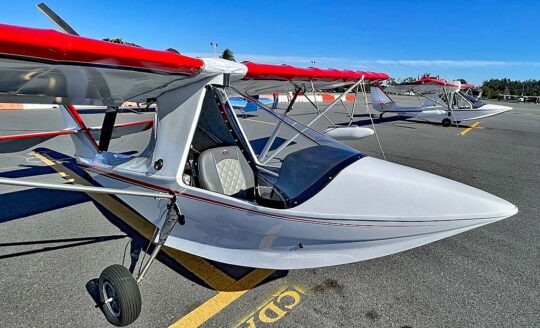 In early 2023, prices start at $60,000 for an Aventura II kit. The factory can walk you through numerous options or features you may want to provide a more specific price and time availability. However, Alex presently states that kits are available in four months.
An Aventura LSA starts at $119,900. Kit versions are available in six months. A fully built model needs a direct quote from the producer. Various types of equipment can be fitted. Aventura II models are available as a kit, an "assisted" kit, a fully-built Special LSA model or you could elect an Experimental LSA, for example, if you want to do all you own maintenance.
In early 2023, prices start at $60,000 for an Aventura II kit. The factory can walk you through numerous options or features you may want to provide a more specific price and time availability. However, Alex presently states that kits are available in four months.
An Aventura LSA starts at $119,900. Kit versions are available in six months. A fully built model needs a direct quote from the producer. Various types of equipment can be fitted. Aventura II models are available as a kit, an "assisted" kit, a fully-built Special LSA model or you could elect an Experimental LSA, for example, if you want to do all you own maintenance.
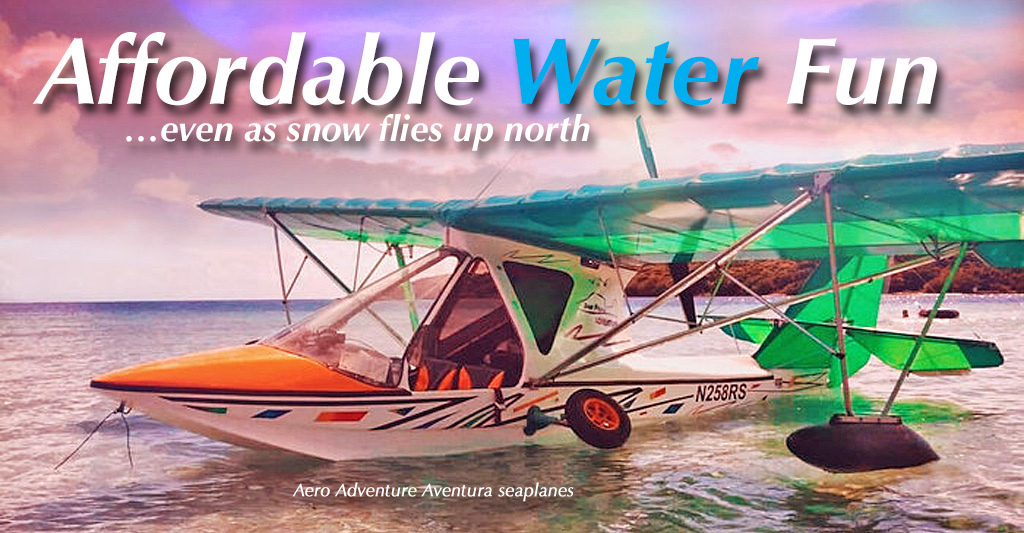
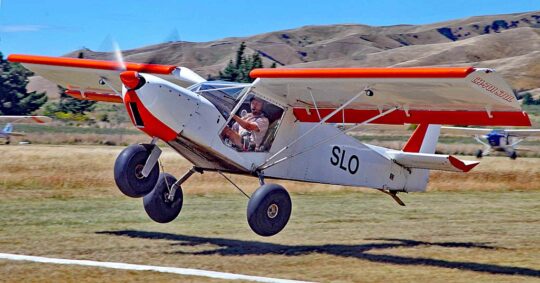 You truly need to see these performances to believe what determined pilots in suitable aircraft can do. I encourage all to come on down to sunny Florida for Sun 'n Fun 2023 and check out the action in Paradise City (formerly the "Ultralight/Lightplane Area" and now badged as "
You truly need to see these performances to believe what determined pilots in suitable aircraft can do. I encourage all to come on down to sunny Florida for Sun 'n Fun 2023 and check out the action in Paradise City (formerly the "Ultralight/Lightplane Area" and now badged as "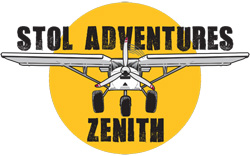 Like its counterpart at AirVenture in the Fun Fly Zone (also the former Ultralight Area), crowds can get close enough to see the STOL performances in great detail. Usually you have to arrive early enough to get a place at the fence. I've seen spectators 10-deep at both events.
Paradise City hosts Sun 'n Fun's "other" runway, a grass strip that's been steadily improved enough that the local
Like its counterpart at AirVenture in the Fun Fly Zone (also the former Ultralight Area), crowds can get close enough to see the STOL performances in great detail. Usually you have to arrive early enough to get a place at the fence. I've seen spectators 10-deep at both events.
Paradise City hosts Sun 'n Fun's "other" runway, a grass strip that's been steadily improved enough that the local 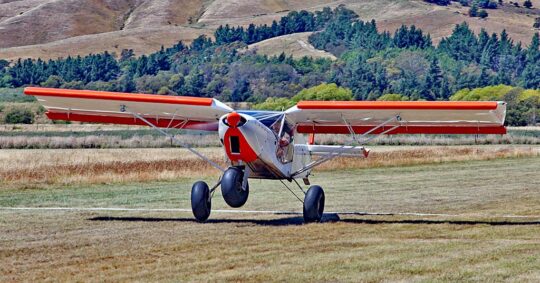 Before
Before 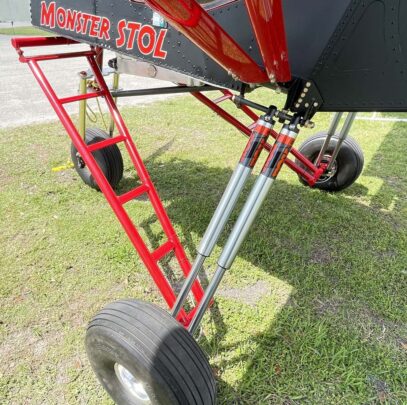 Using his powerful Viking engines but also adding adding a super-special humongous landing gear arrangment to maximize rotation-for-takeoff performance Jan Eggenfellner created his Monster STOL.
As regular enthusiasts know, most of the top performers use taildraggers. Yet Zenith clearly does well with tricycle gear, even the regular version; the video below illustrates this.
Congratulations to Hamish Crowe for his first place finish at the
Using his powerful Viking engines but also adding adding a super-special humongous landing gear arrangment to maximize rotation-for-takeoff performance Jan Eggenfellner created his Monster STOL.
As regular enthusiasts know, most of the top performers use taildraggers. Yet Zenith clearly does well with tricycle gear, even the regular version; the video below illustrates this.
Congratulations to Hamish Crowe for his first place finish at the 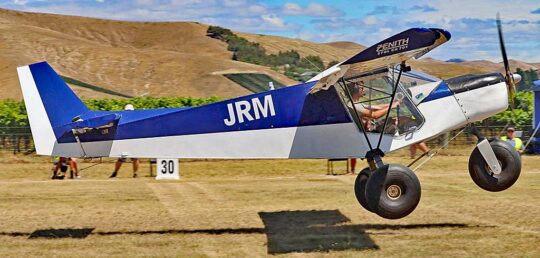 Fellow Zenith pilot Daniel Wright finished in second place flying his blue and white Zenith STOL (registration JRM) with a takeoff roll of just 19.0 meters (62.3 feet) and landing roll of 30.7 meters (100.7 feet), for a combined distance of just 49.7 meters (163.1 feet). Both pilots can be seen performing in the short video below.
Fellow Zenith pilot Daniel Wright finished in second place flying his blue and white Zenith STOL (registration JRM) with a takeoff roll of just 19.0 meters (62.3 feet) and landing roll of 30.7 meters (100.7 feet), for a combined distance of just 49.7 meters (163.1 feet). Both pilots can be seen performing in the short video below.

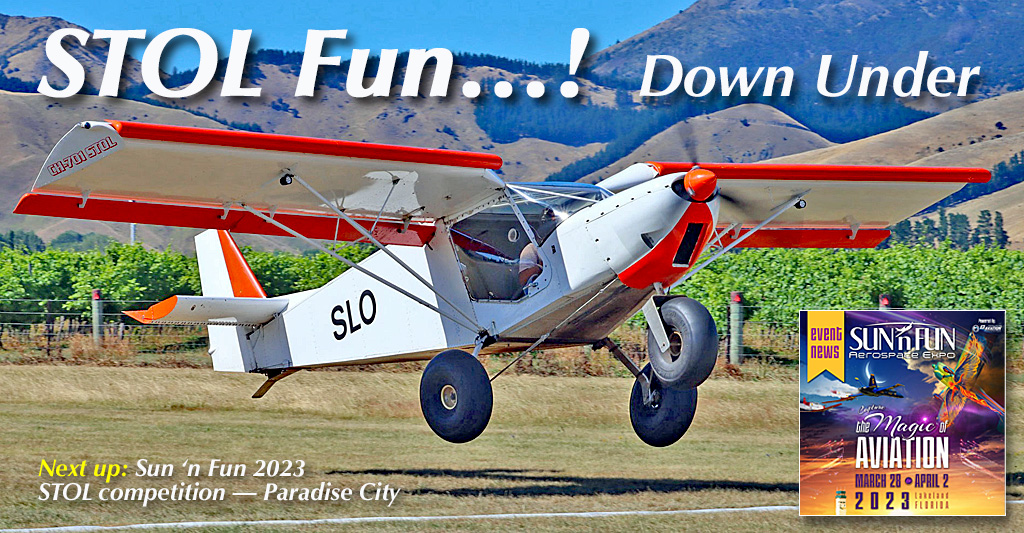
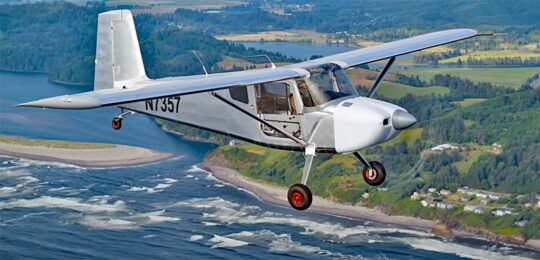 Naturally, Van's isn't the only company aware of what FAA is planning. Any other company or individual who participates on the ASTM committee can know most of the same information. Indeed, this is where I get most of my knowledge about Mosaic as
Naturally, Van's isn't the only company aware of what FAA is planning. Any other company or individual who participates on the ASTM committee can know most of the same information. Indeed, this is where I get most of my knowledge about Mosaic as 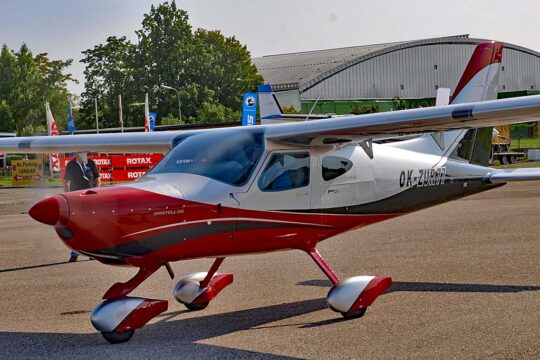
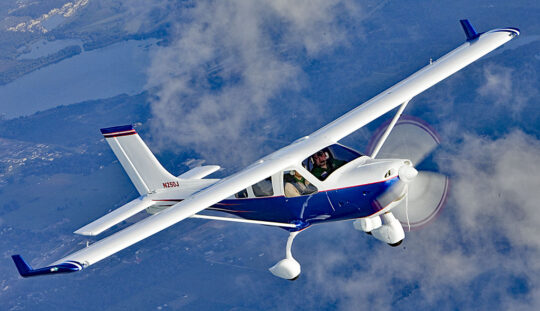 Jabiru
Jabiru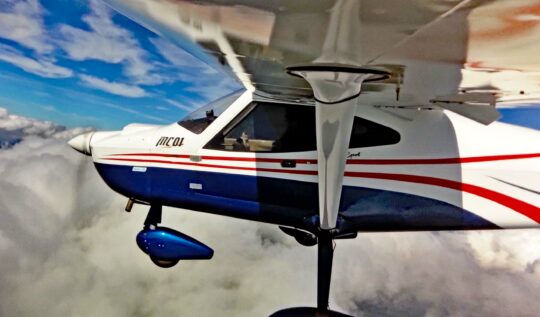 Montaer
Montaer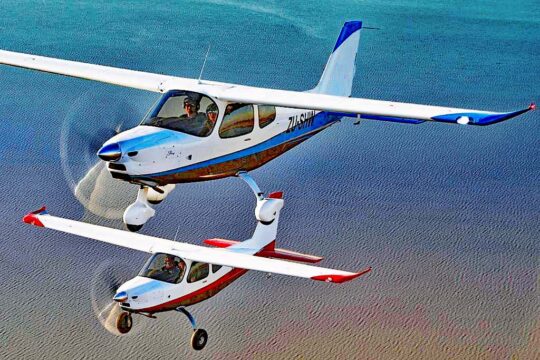 The Airplane Factory
The Airplane Factory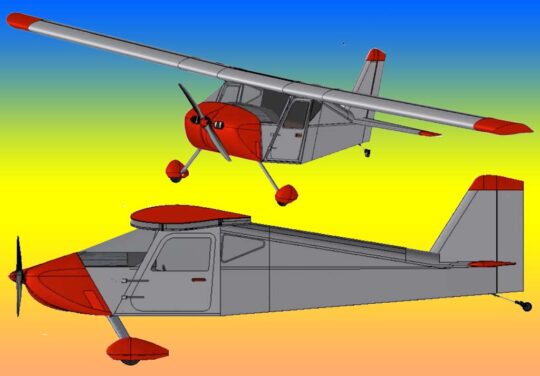
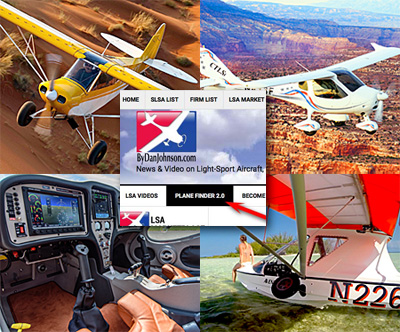 More Available
More Available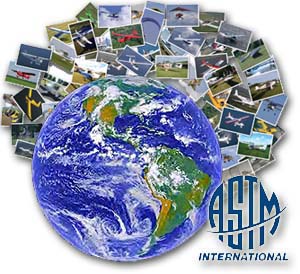 *
*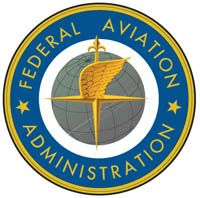 For FAA, this is somewhat new ground. It's unusual for the agency to release this much information about a regulation before they issue it. These things change internally as different FAA departments weigh in, so they usually keep their cards close to the chest until the NPRM (Notice of Proposed Rule Making) is near final form. All this relates only to the airframe.
A different FAA group handles pilot privileges and who gets to fly what size aircraft with how many people on board. They are much less involved with ASTM committee work. That is why we have much less information about what the agency plans regarding pilot certification or flight operations.
For FAA, this is somewhat new ground. It's unusual for the agency to release this much information about a regulation before they issue it. These things change internally as different FAA departments weigh in, so they usually keep their cards close to the chest until the NPRM (Notice of Proposed Rule Making) is near final form. All this relates only to the airframe.
A different FAA group handles pilot privileges and who gets to fly what size aircraft with how many people on board. They are much less involved with ASTM committee work. That is why we have much less information about what the agency plans regarding pilot certification or flight operations.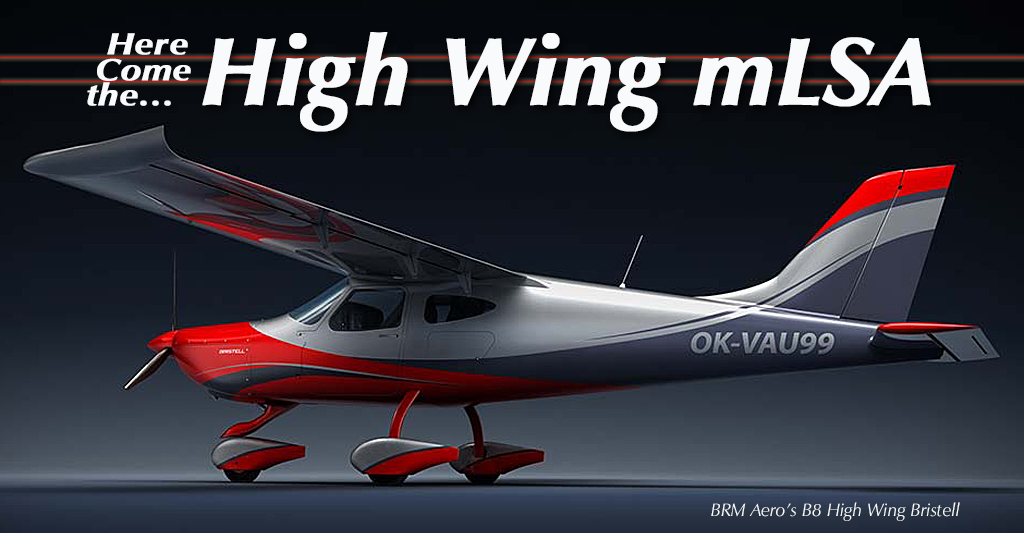
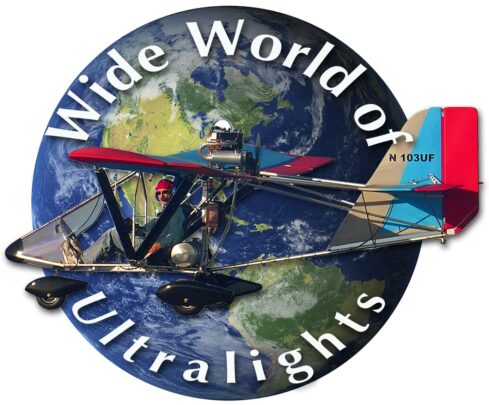 After Covid, so many things changed for so long that, today, it's getting hard to remember how it was. EAA hosted (in-person) Ultralight Days for some years, with a wintery gathering of aviation's lightest flying machines at their splendid facilities right behind the HQ building. Specifically I mean Pioneer Airport. Covid played a role in suspending that event.
Yet EAA's helpful experts, led by Charlie Becker and Timm Bogenhagen, had a fresher idea. While corporations were Zoom-meeting with staff and clients, Timm and Charlie sprung into action. In the new age of working remotely, how could EAA convey lots of knowledge to their members and how could non-members get a great object lesson in how experts can help?
After Covid, so many things changed for so long that, today, it's getting hard to remember how it was. EAA hosted (in-person) Ultralight Days for some years, with a wintery gathering of aviation's lightest flying machines at their splendid facilities right behind the HQ building. Specifically I mean Pioneer Airport. Covid played a role in suspending that event.
Yet EAA's helpful experts, led by Charlie Becker and Timm Bogenhagen, had a fresher idea. While corporations were Zoom-meeting with staff and clients, Timm and Charlie sprung into action. In the new age of working remotely, how could EAA convey lots of knowledge to their members and how could non-members get a great object lesson in how experts can help?
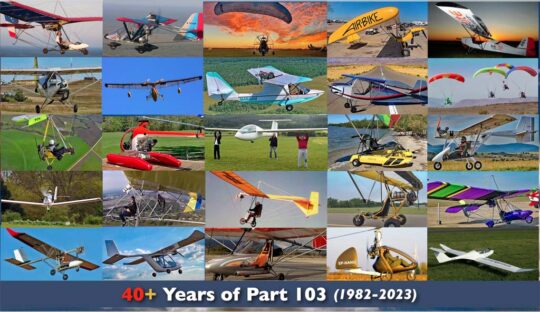 Using their system that worked beautifully for homebuilders, EAA cooked up Virtual Ultralight Days.
EAA said, "Subject matter experts of the ultralight community will present webinars on the lighter side of recreational aviation including how to get started in ultralights; how-to instructions on a variety of ultralight aircraft such as gyroplanes, powered parachutes, and trikes; and overall informative topics on maintenance, airport operations, safety inspections, and more."
Using their system that worked beautifully for homebuilders, EAA cooked up Virtual Ultralight Days.
EAA said, "Subject matter experts of the ultralight community will present webinars on the lighter side of recreational aviation including how to get started in ultralights; how-to instructions on a variety of ultralight aircraft such as gyroplanes, powered parachutes, and trikes; and overall informative topics on maintenance, airport operations, safety inspections, and more."
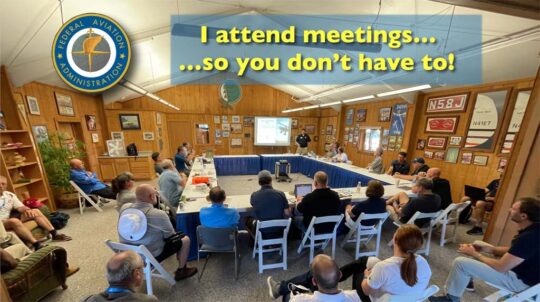 That covers a lot of ground. How could EAA gurus deliver all this useful information? One word: Webinars… and plenty of them. In about two weeks — over February 21-22-23, 2023 — EAA will present five seminars a day, a total of 15 highly information presentations. See all sessions referenced below.
That covers a lot of ground. How could EAA gurus deliver all this useful information? One word: Webinars… and plenty of them. In about two weeks — over February 21-22-23, 2023 — EAA will present five seminars a day, a total of 15 highly information presentations. See all sessions referenced below.
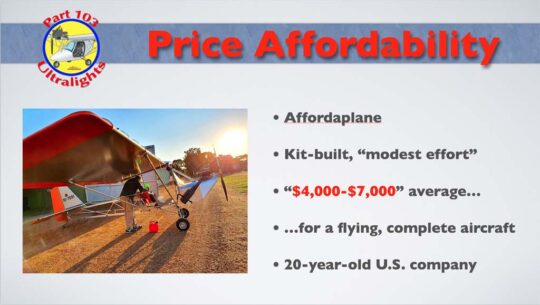 Yet that's not all the interaction you can have. During these talks, EAA can survey listeners. As one of the presenters, I am excited about this. When I give a talk in person, I often start out asking some questions of attendees so I can better suit my remarks to their interest and experience. On a webinar the presenter cannot see his or her audience so how do they know who is watching? Surveys will help plus give you a chance to interact.
Yet that's not all the interaction you can have. During these talks, EAA can survey listeners. As one of the presenters, I am excited about this. When I give a talk in person, I often start out asking some questions of attendees so I can better suit my remarks to their interest and experience. On a webinar the presenter cannot see his or her audience so how do they know who is watching? Surveys will help plus give you a chance to interact.
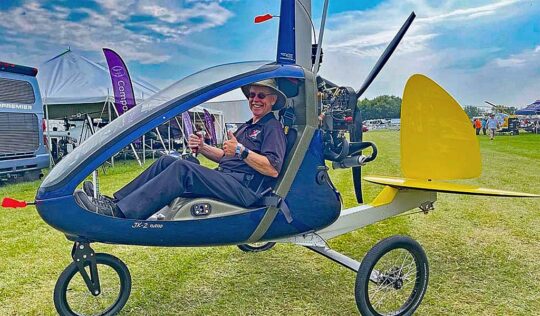 "Anyone can register for any presentation," EAA said, "by going to their
"Anyone can register for any presentation," EAA said, "by going to their 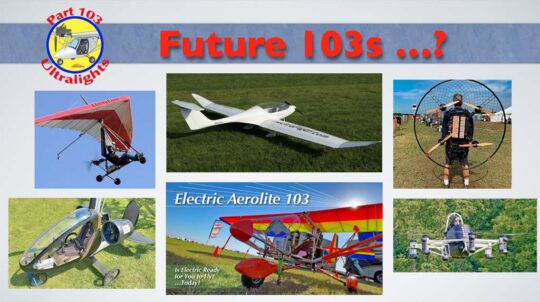 If you like a topic, you check the time, register, and EAA will send you a drop-dead-simple button to click. If that time doesn't suit you, no problem as you can watch the recorded version later. It may take a short time to get these ready but then they will be available for a long time. For example, I enjoyed a couple presentations from 2022.
EAA began Virtual Ultralight Days last year on the 40th anniversary of Part 103 becoming part of the FARs.
I hope you can tune in — or watch later. Following is the entire schedule or see Article Links below to quicken your search.
If you like a topic, you check the time, register, and EAA will send you a drop-dead-simple button to click. If that time doesn't suit you, no problem as you can watch the recorded version later. It may take a short time to get these ready but then they will be available for a long time. For example, I enjoyed a couple presentations from 2022.
EAA began Virtual Ultralight Days last year on the 40th anniversary of Part 103 becoming part of the FARs.
I hope you can tune in — or watch later. Following is the entire schedule or see Article Links below to quicken your search.
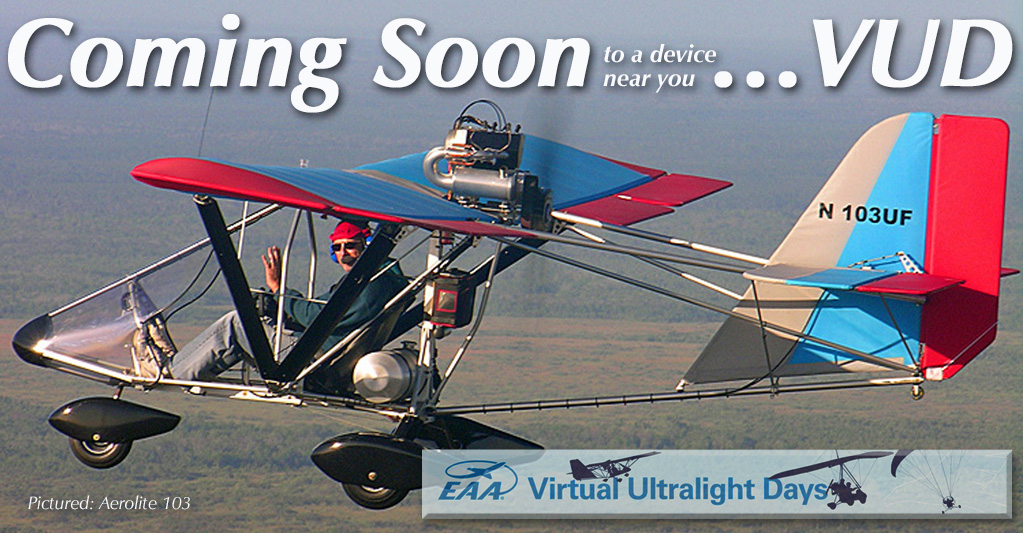
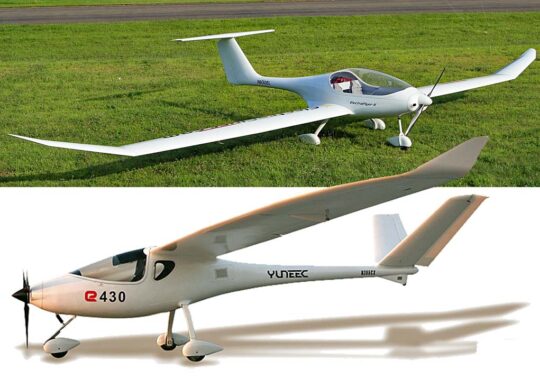
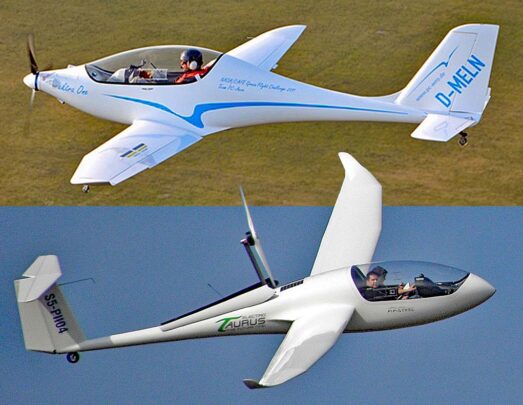
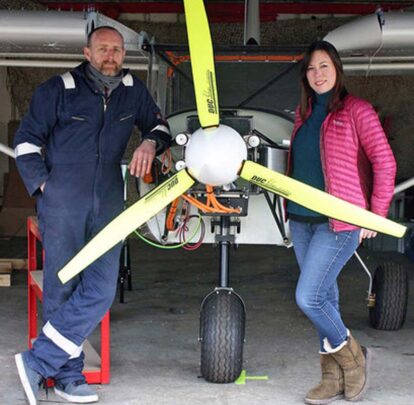 Tim and Helen Bridge are developing the ‘electric sky jeep,’ an all-electric
Tim and Helen Bridge are developing the ‘electric sky jeep,’ an all-electric 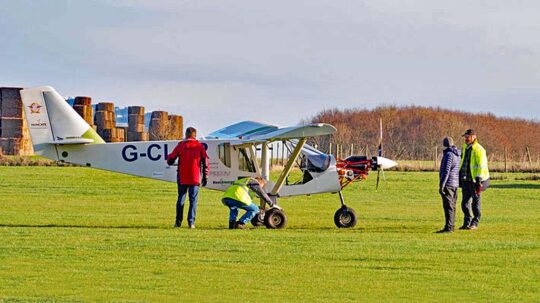 "The Bridges' company plans to tap into ground-based networks of solar-powered energy grids in remote towns and villages," said Zenith, "so that the aircraft can fly between villages delivering vital medical staff and supplies without relying on outside fuel that needs to be flown in to the location."
Given its STOL (short takeoff and landing) capabilities, the manufacturer said, "Zenith's CH-750 is well suited for 'off-airport' operations, and can be flown in and out of shorter runways that may also be 'unimproved,' such as grass or dirt landing fields."
The Bridges founded their company, NUNCATS, in 2019. Now that the aircraft has been completed and flown they predicted, “As soon as funding allows, we hope to move towards getting this into communities where it can make a real difference. There are currently a billion people in the world with no access to healthcare.” The project is still seeking backers and sponsors to help fund its development.
"The Bridges' company plans to tap into ground-based networks of solar-powered energy grids in remote towns and villages," said Zenith, "so that the aircraft can fly between villages delivering vital medical staff and supplies without relying on outside fuel that needs to be flown in to the location."
Given its STOL (short takeoff and landing) capabilities, the manufacturer said, "Zenith's CH-750 is well suited for 'off-airport' operations, and can be flown in and out of shorter runways that may also be 'unimproved,' such as grass or dirt landing fields."
The Bridges founded their company, NUNCATS, in 2019. Now that the aircraft has been completed and flown they predicted, “As soon as funding allows, we hope to move towards getting this into communities where it can make a real difference. There are currently a billion people in the world with no access to healthcare.” The project is still seeking backers and sponsors to help fund its development.
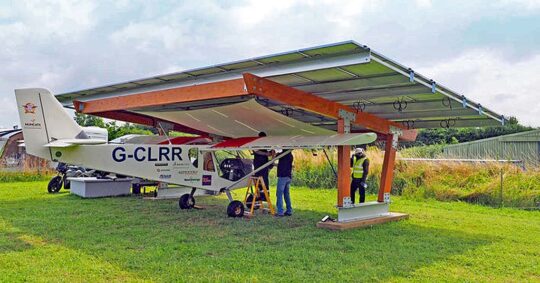
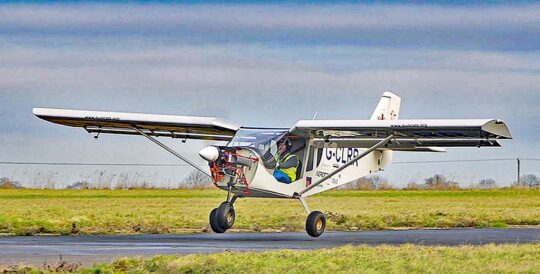
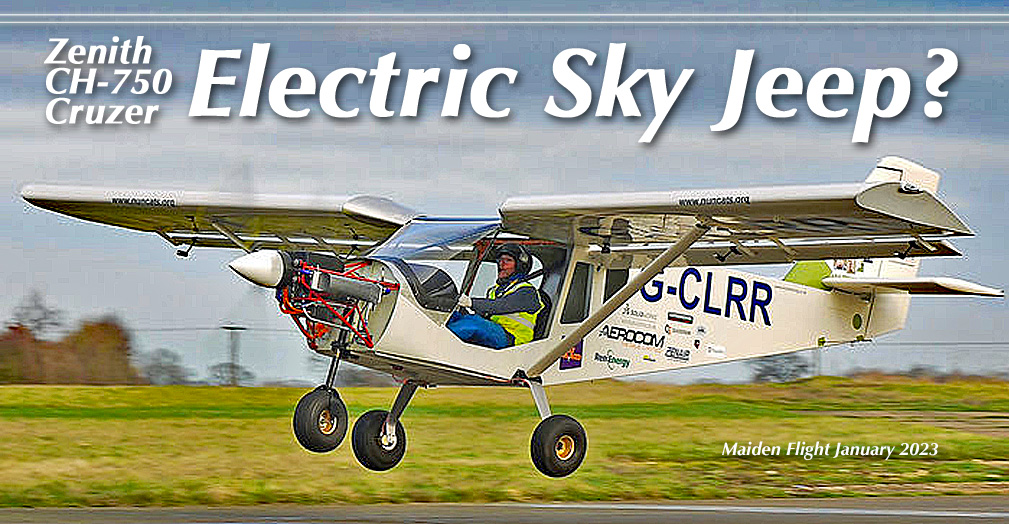
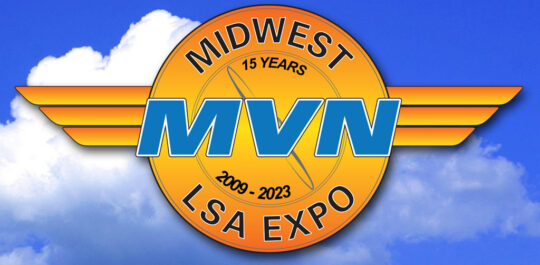 Sebring Expo accomplished its principal goal for the race-city airport: to put it on the aviation map in a definitive way. Led by longtime airport manager Mike Willingham, Sebring enjoyed a remarkable run and the young LSA industry benefitted greatly from their event. If you're curious about how and why Sebring called it quits, check this
Sebring Expo accomplished its principal goal for the race-city airport: to put it on the aviation map in a definitive way. Led by longtime airport manager Mike Willingham, Sebring enjoyed a remarkable run and the young LSA industry benefitted greatly from their event. If you're curious about how and why Sebring called it quits, check this 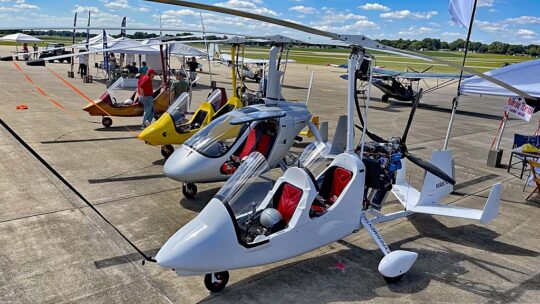
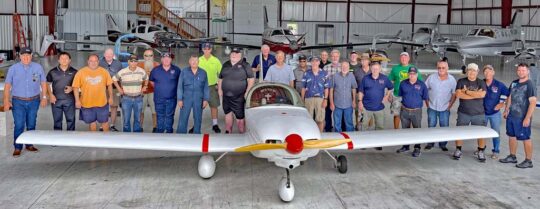 Held annually at the Mt. Vernon Outland Airport (KMVN), Midwest is focused on showcasing all things light aviation. Although the event serves the LSA, Sport Pilot-eligible kit-built aircraft and 103 ultralight communities, all segments of aviation are welcome.
Indeed last year, the KR builders group held their event concurrently on the same grounds (nearby image from 2022). It makes for a nice crossover.
Held annually at the Mt. Vernon Outland Airport (KMVN), Midwest is focused on showcasing all things light aviation. Although the event serves the LSA, Sport Pilot-eligible kit-built aircraft and 103 ultralight communities, all segments of aviation are welcome.
Indeed last year, the KR builders group held their event concurrently on the same grounds (nearby image from 2022). It makes for a nice crossover.
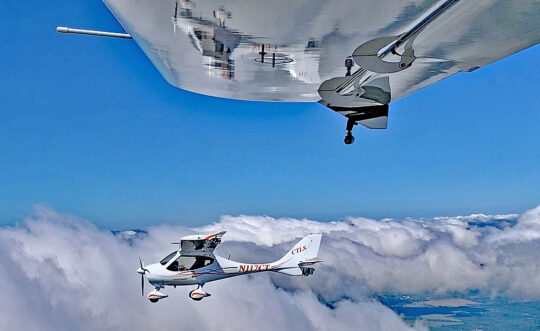
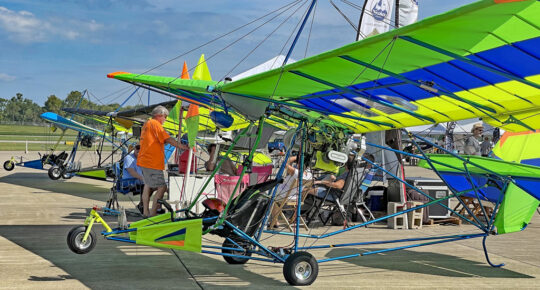 "Midwest Expo will feature the best of the best in the sport aircraft communities to include Light-Sport Aircraft, ultralights, kit planes, powered parachutes, powered paragliders, trikes, gyroplanes, amphibians and more," said Chris.
"Jana will be concentrating on the addition of avionics, engines, propellers, aircraft supplies and pilot gear for the shopping enjoyment of the aviation enthusiast," he added. "Forums, workshops, and keynote speakers are also being organized, and again this year demo flights will be available all day, every day for those shopping for a new aircraft."
"Midwest Expo will feature the best of the best in the sport aircraft communities to include Light-Sport Aircraft, ultralights, kit planes, powered parachutes, powered paragliders, trikes, gyroplanes, amphibians and more," said Chris.
"Jana will be concentrating on the addition of avionics, engines, propellers, aircraft supplies and pilot gear for the shopping enjoyment of the aviation enthusiast," he added. "Forums, workshops, and keynote speakers are also being organized, and again this year demo flights will be available all day, every day for those shopping for a new aircraft."
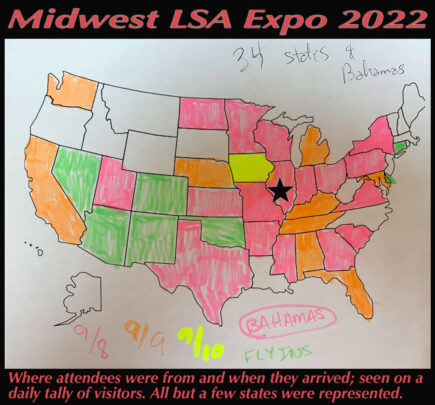 If you live within range — people travel from all over the USA and even foreign countries — Midwest Expo offers free admission, free parking, and free camping. Based around the terminal building at KMVN, visitors will find a very popular restaurant (seriously, local residents regularly fill the place). In addition, forums are held indoors plus everyone appreciates clean, proper restrooms.
"Stay tuned as we work to spin the 2023 Expo onto our
If you live within range — people travel from all over the USA and even foreign countries — Midwest Expo offers free admission, free parking, and free camping. Based around the terminal building at KMVN, visitors will find a very popular restaurant (seriously, local residents regularly fill the place). In addition, forums are held indoors plus everyone appreciates clean, proper restrooms.
"Stay tuned as we work to spin the 2023 Expo onto our 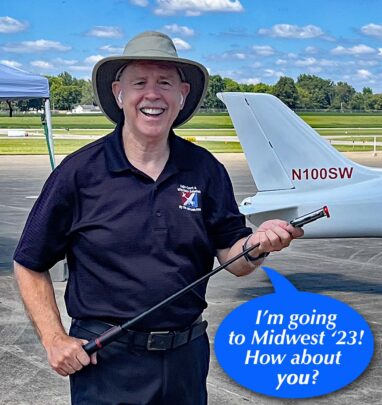
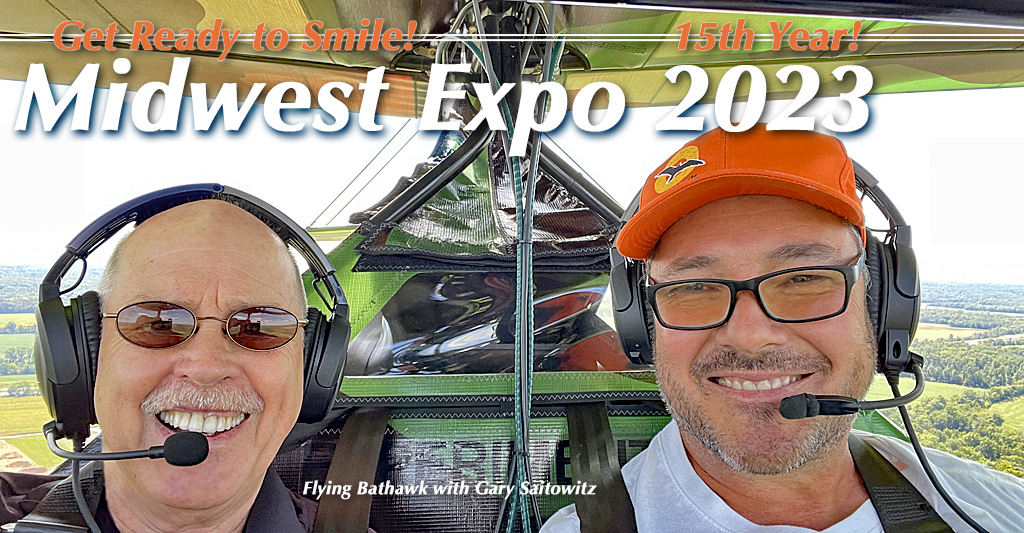
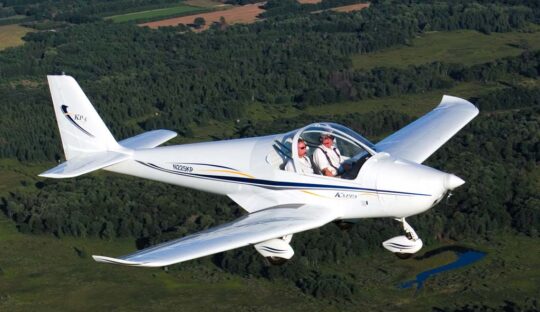
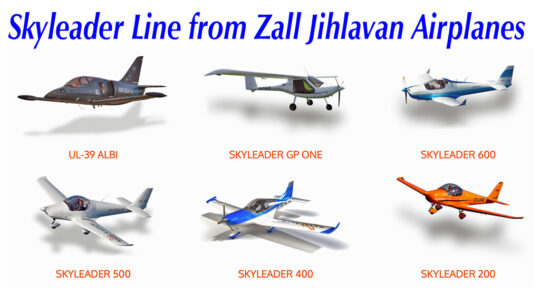 In North America, Skyleader is represented by Michael Tomazin using the web domain
In North America, Skyleader is represented by Michael Tomazin using the web domain 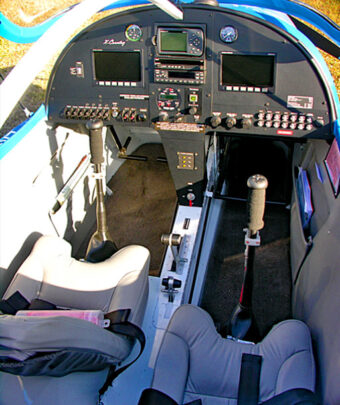
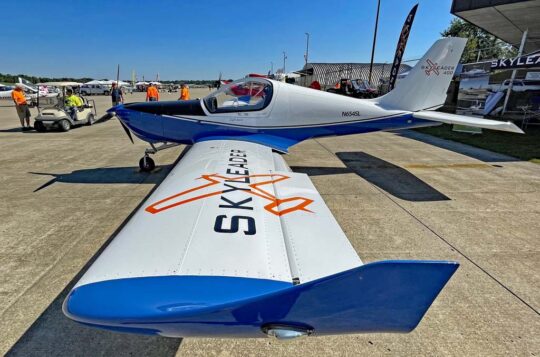 "Skyleader 400 is designed for recreational flying and pilot training. It is distinguished by its … sports car-inspired looks and unique gull-wing-doors canopy," said the U.S. representative. "It features a spacious interior with plenty of space for pilots and baggage (aft of the seats), and a 21-gallon fuel tank that gives the 400 a range of around 500 miles depending on engine selections and options." Larger fuel options are available.
"Skyleader 400 is manufactured in three base configurations: Basic, Training, and Club, each with the option for further customization to suit a buyer's needs, desires, and budget," said Skyleader USA. "From engine and avionics upgrades, to genuine leather upholstery and custom paint, you can make the Skyleader uniquely yours."
"Skyleader 400 is designed for recreational flying and pilot training. It is distinguished by its … sports car-inspired looks and unique gull-wing-doors canopy," said the U.S. representative. "It features a spacious interior with plenty of space for pilots and baggage (aft of the seats), and a 21-gallon fuel tank that gives the 400 a range of around 500 miles depending on engine selections and options." Larger fuel options are available.
"Skyleader 400 is manufactured in three base configurations: Basic, Training, and Club, each with the option for further customization to suit a buyer's needs, desires, and budget," said Skyleader USA. "From engine and avionics upgrades, to genuine leather upholstery and custom paint, you can make the Skyleader uniquely yours."
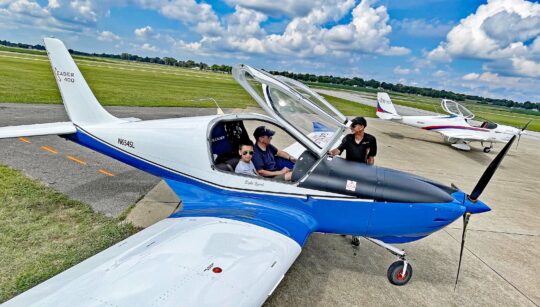
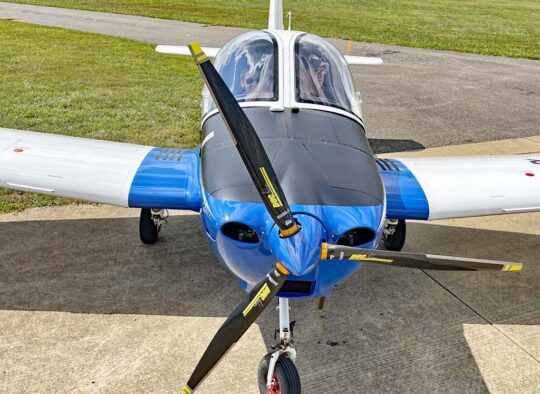 "Flight schools love the Skyleader 400," said Michael. "It can be a TAA (Technically Advanced Aircraft, as required for a Commercial certificate)." Originally built for flight schools, Skyleader 400 has sturdy gear. One example Michael recently examined at the factory had 7,000 hours and 20,000 "cycles" (or takeoff and landings). It returned to the factory only after a student pilot taxied into a ditch, damaging the front wheel.
"Flight schools love the Skyleader 400," said Michael. "It can be a TAA (Technically Advanced Aircraft, as required for a Commercial certificate)." Originally built for flight schools, Skyleader 400 has sturdy gear. One example Michael recently examined at the factory had 7,000 hours and 20,000 "cycles" (or takeoff and landings). It returned to the factory only after a student pilot taxied into a ditch, damaging the front wheel.
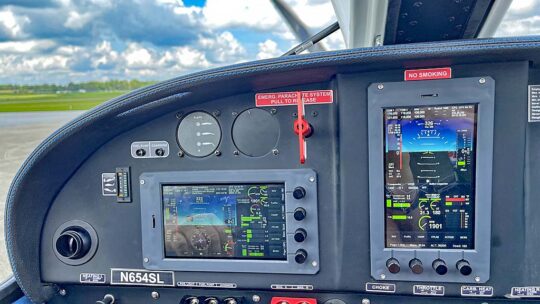 Skyleader 400 follows the entire Skyleader line using Fowler-style flaps that work exceptionally hard when deployed and hide almost completely when retracted. It's an elegant system, especially so on aircraft in the lighter range, and this yields stalls that happen well below what the LSA regulations require.
Like the surprisingly affordable GP-One, Skyleader 400 can effectively use the nearly bullet-proof 80-horsepower Rotax 912 that will run nearly forever and use lower octane regular auto fuel, making it exceptionally low-cost to operate. However, as the 100-horsepower engine costs only a couple thousand more, non-flight school customers usually opt for it. Student or private owner, Skyleader 400 offers plenty of room in the cockpit, good even for a 6-foot, 3-inch tall pilot, said Michael.
In early 2023, Tomazin reported he has six ready-to-fly airplanes on order, plus two kits — the latter offering is new since Covid. "I just ordered the first two kits in late fall 2022." One of the kits is a Skyleader 400 equipped with the fuel-miserly Rotax 912iS.
Skyleader 400 follows the entire Skyleader line using Fowler-style flaps that work exceptionally hard when deployed and hide almost completely when retracted. It's an elegant system, especially so on aircraft in the lighter range, and this yields stalls that happen well below what the LSA regulations require.
Like the surprisingly affordable GP-One, Skyleader 400 can effectively use the nearly bullet-proof 80-horsepower Rotax 912 that will run nearly forever and use lower octane regular auto fuel, making it exceptionally low-cost to operate. However, as the 100-horsepower engine costs only a couple thousand more, non-flight school customers usually opt for it. Student or private owner, Skyleader 400 offers plenty of room in the cockpit, good even for a 6-foot, 3-inch tall pilot, said Michael.
In early 2023, Tomazin reported he has six ready-to-fly airplanes on order, plus two kits — the latter offering is new since Covid. "I just ordered the first two kits in late fall 2022." One of the kits is a Skyleader 400 equipped with the fuel-miserly Rotax 912iS.
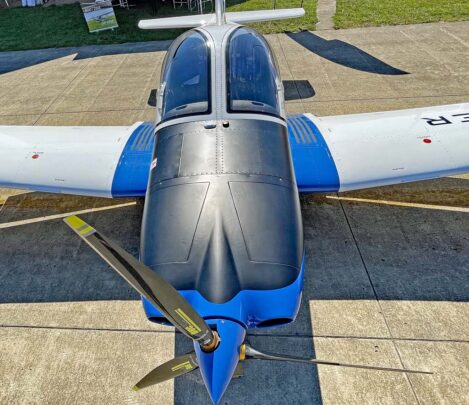 Worldwide, the company fleet is estimated at about 350 Skyleader 600s, Michael indicated. Counting all models, close to 600 of the company's airplanes are flying. "This is their 23rd year," Michael said. "They laid off nobody during Covid and they presently have many orders," he added. "If we could get all the avionics we needed, we could deliver faster."
When Skyleader / Jihlavan introduced the Skyleader 400 they called it their "mid-line model," known internally as JA-400, distinctive because of its gullwing-doors canopy construction." Skyleader 600 features an aft-sliding canopy.
"Skyleader offers the 400 in three base configurations: Basic, Training, and Club, each with the option for further customization to suit your needs, desires, and budget," explained Skyleader in Czech. "From engine and avionics upgrades, to genuine leather upholstery and custom paint, you can make the Skyleader uniquely yours."
The Czech producer said, "Kappa 77 (now Zall Jihlavan Airplanes; Skyleader) was established in 1996. It started with the production of the KP-2U aircraft called “Owl.” In 1999, the aircraft received German certification, later following with permissions in Italy, France, Poland, and the Netherlands.
Worldwide, the company fleet is estimated at about 350 Skyleader 600s, Michael indicated. Counting all models, close to 600 of the company's airplanes are flying. "This is their 23rd year," Michael said. "They laid off nobody during Covid and they presently have many orders," he added. "If we could get all the avionics we needed, we could deliver faster."
When Skyleader / Jihlavan introduced the Skyleader 400 they called it their "mid-line model," known internally as JA-400, distinctive because of its gullwing-doors canopy construction." Skyleader 600 features an aft-sliding canopy.
"Skyleader offers the 400 in three base configurations: Basic, Training, and Club, each with the option for further customization to suit your needs, desires, and budget," explained Skyleader in Czech. "From engine and avionics upgrades, to genuine leather upholstery and custom paint, you can make the Skyleader uniquely yours."
The Czech producer said, "Kappa 77 (now Zall Jihlavan Airplanes; Skyleader) was established in 1996. It started with the production of the KP-2U aircraft called “Owl.” In 1999, the aircraft received German certification, later following with permissions in Italy, France, Poland, and the Netherlands.
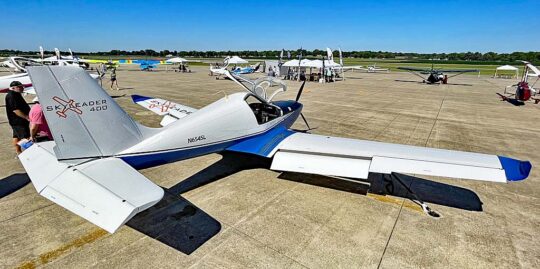 Designer Antonín Píštěk also worked with Evektor — based in the same area as Jihlavan — on the five-seat VUT 100 Cobra aircraft designed for approval under conventional certification.
"The Zall Jihlavan Airplanes factory is heavily involved in aeronautical research, design and commercial manufacture," clarified the builder. "The company [built] doors for the Airbus A320 airliner and [does] other certified aviation sub-contracting."
With a solid company, interested buyers, and orders bound for the U.S., I expect aviators will see more Skyleaders at airports near them.
Designer Antonín Píštěk also worked with Evektor — based in the same area as Jihlavan — on the five-seat VUT 100 Cobra aircraft designed for approval under conventional certification.
"The Zall Jihlavan Airplanes factory is heavily involved in aeronautical research, design and commercial manufacture," clarified the builder. "The company [built] doors for the Airbus A320 airliner and [does] other certified aviation sub-contracting."
With a solid company, interested buyers, and orders bound for the U.S., I expect aviators will see more Skyleaders at airports near them.
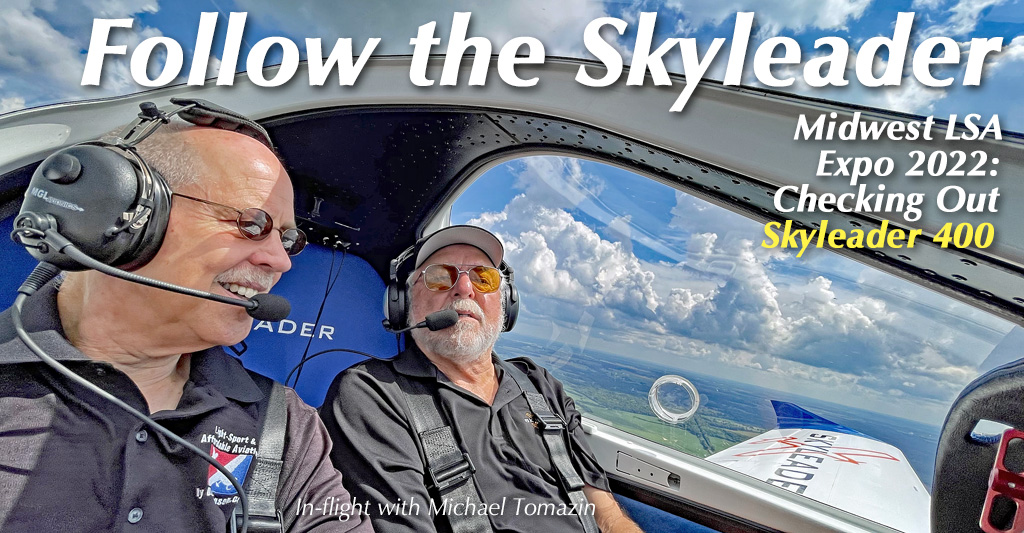
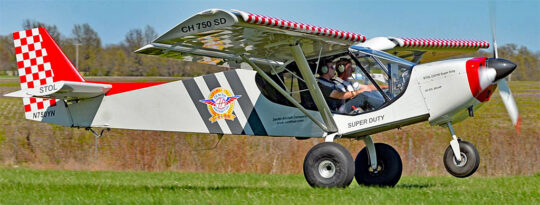
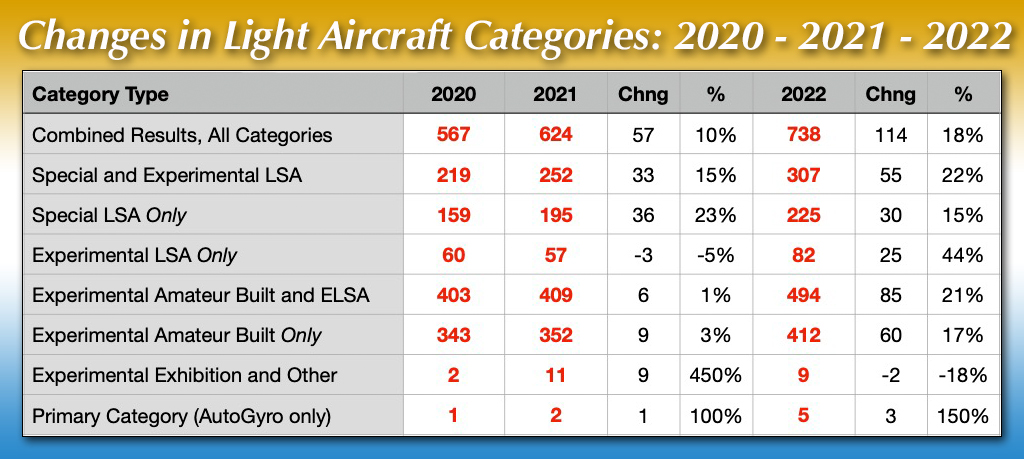
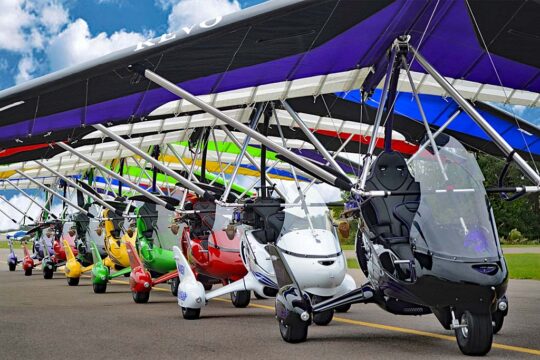
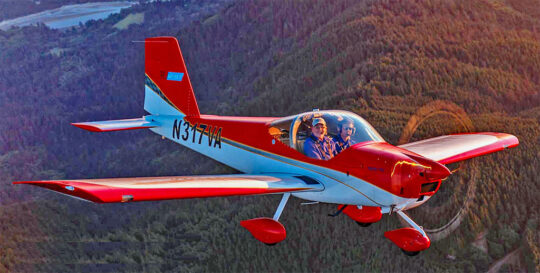
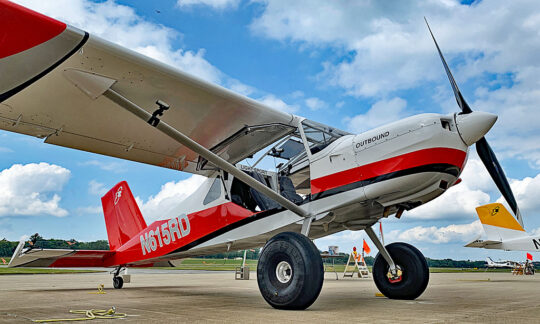
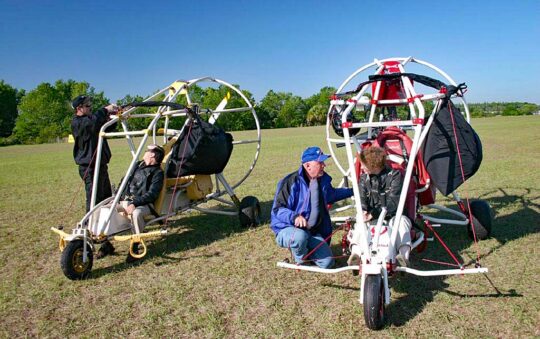
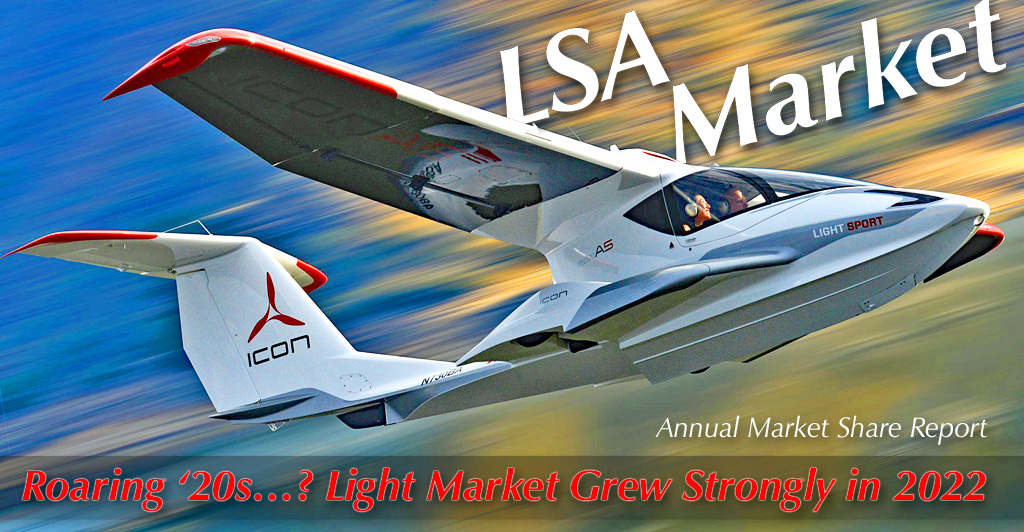
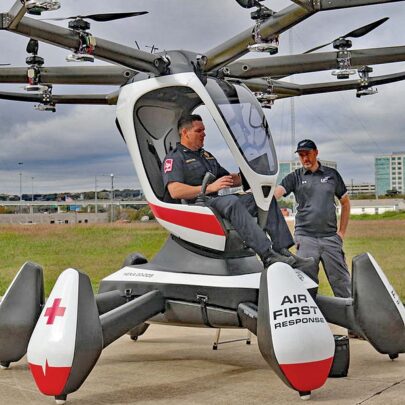 Most commonly, you hear "drone."
Yet "drone" is further confusing because we haven't separated crewed aircraft from uncrewed aircraft and this is a major distinction. FAA has also made this separation, so for this article, I will only speak of crewed aircraft, that is, a flying machine with a pilot using controls to direct its flight. In addition, I will also stick solely to single place aircraft that can theoretically qualify as a legitimate Part 103 ultralight vehicle.
Let me first extend a quick thanks to IEEE's Spectrum magazine for making me aware of entries I'd missed. You can
Most commonly, you hear "drone."
Yet "drone" is further confusing because we haven't separated crewed aircraft from uncrewed aircraft and this is a major distinction. FAA has also made this separation, so for this article, I will only speak of crewed aircraft, that is, a flying machine with a pilot using controls to direct its flight. In addition, I will also stick solely to single place aircraft that can theoretically qualify as a legitimate Part 103 ultralight vehicle.
Let me first extend a quick thanks to IEEE's Spectrum magazine for making me aware of entries I'd missed. You can 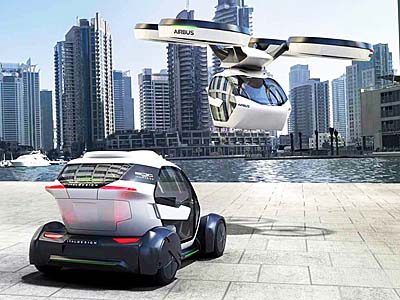 The Spectrum article refers to 350 aircraft developments in the eVTOL field, spanning 48 countries. How many will make it to market and succeed? When will public acceptance allow executives to zip over urban congestion in their buzzing contraptions? Will FAA ever finish regulating them? All these questions are unknown.
However, if asked to bet on any near-term success, I'd guess it will be a Part 103-qualifying "recreational multicopters" because anything larger remains years away, perhaps decades. Therefore, in this article, I will only touch on some genuine 103 entries. Not all will succeed but one or two might show us the way forward.
The Spectrum article refers to 350 aircraft developments in the eVTOL field, spanning 48 countries. How many will make it to market and succeed? When will public acceptance allow executives to zip over urban congestion in their buzzing contraptions? Will FAA ever finish regulating them? All these questions are unknown.
However, if asked to bet on any near-term success, I'd guess it will be a Part 103-qualifying "recreational multicopters" because anything larger remains years away, perhaps decades. Therefore, in this article, I will only touch on some genuine 103 entries. Not all will succeed but one or two might show us the way forward.
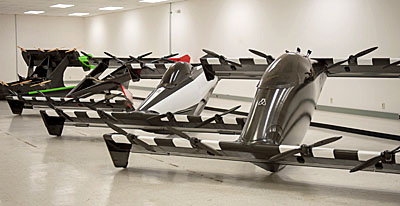 All models featured here are single-seat aircraft that may possibly qualify for Part 103 regulations. Two of these companies, Lift Aircraft and Opener, have engaged
All models featured here are single-seat aircraft that may possibly qualify for Part 103 regulations. Two of these companies, Lift Aircraft and Opener, have engaged 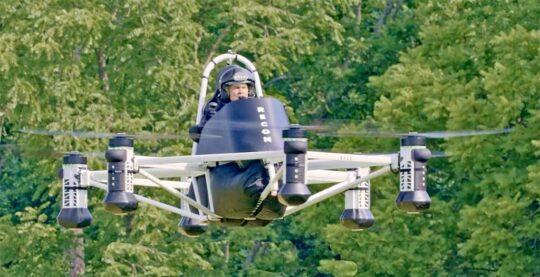 Recon is compact (like all of these), only 15.5 feet long, 7.5 feet wide, and just under five feet tall. It weighs a reported 286 pounds, though more detail was not available.
"Powered by six electric motors, the carbon-blade propellers spin at 2,000 rpm and when flying it’s not very loud," claimed the company. Mick Kowitz, CEO and founder of
Recon is compact (like all of these), only 15.5 feet long, 7.5 feet wide, and just under five feet tall. It weighs a reported 286 pounds, though more detail was not available.
"Powered by six electric motors, the carbon-blade propellers spin at 2,000 rpm and when flying it’s not very loud," claimed the company. Mick Kowitz, CEO and founder of 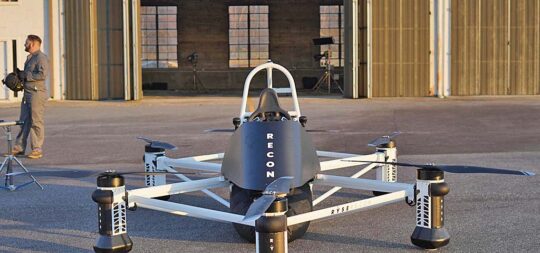 "It’s easier to operate a flying ATV than you think — or, at least it was for me. That’s not a humblebrag either. It was designed so any idiot like me — who backs up into his recycling bin every time he pulls out of the driveway — can jump in and use it," wrote Tony Ho Tran for the Daily Beast. Is it a good thing that a complete newbie can get in and fly one of these?
Beyond first-time pilots, Ryse Aero aims to help the agricultural community with a lot of acreage to monitor. The U.S. start-up is working on a single-seat eVTOL vehicle that could be operated by farmers, winemakers, or park rangers with minimal training under the FAA’s Part 103 rules. No pricing has been announced at this time.
"It’s easier to operate a flying ATV than you think — or, at least it was for me. That’s not a humblebrag either. It was designed so any idiot like me — who backs up into his recycling bin every time he pulls out of the driveway — can jump in and use it," wrote Tony Ho Tran for the Daily Beast. Is it a good thing that a complete newbie can get in and fly one of these?
Beyond first-time pilots, Ryse Aero aims to help the agricultural community with a lot of acreage to monitor. The U.S. start-up is working on a single-seat eVTOL vehicle that could be operated by farmers, winemakers, or park rangers with minimal training under the FAA’s Part 103 rules. No pricing has been announced at this time.
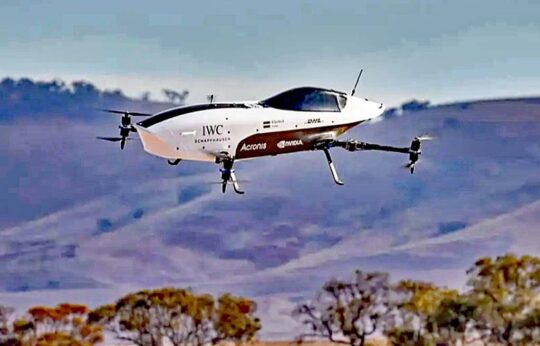 Based in Australia, Alauda Aeronautics said, "[We are] building performance electric flying cars" and "racing to deliver a revolution in personal air mobility so everyone will own a flying car." On their website, information is very sparse but they quickly introduce the reader to Airspeeder, the "world's first series for electric flying cars." While their website suggests Alauda also has more orthodox goals, they appear focused on air racing vehicles. Alauda supports Airspeeder developer Mike Pearson as he forms a new league.
He wrote, "From the dawn of the age of the motor car, it has been racing that pushes innovation. We have Formula 1 to thank for the key performance and safety innovations we take for granted today." He added, "Our mission is to build the ultimate performance flying car [that] will define a new mobility revolution."
Based in Australia, Alauda Aeronautics said, "[We are] building performance electric flying cars" and "racing to deliver a revolution in personal air mobility so everyone will own a flying car." On their website, information is very sparse but they quickly introduce the reader to Airspeeder, the "world's first series for electric flying cars." While their website suggests Alauda also has more orthodox goals, they appear focused on air racing vehicles. Alauda supports Airspeeder developer Mike Pearson as he forms a new league.
He wrote, "From the dawn of the age of the motor car, it has been racing that pushes innovation. We have Formula 1 to thank for the key performance and safety innovations we take for granted today." He added, "Our mission is to build the ultimate performance flying car [that] will define a new mobility revolution."
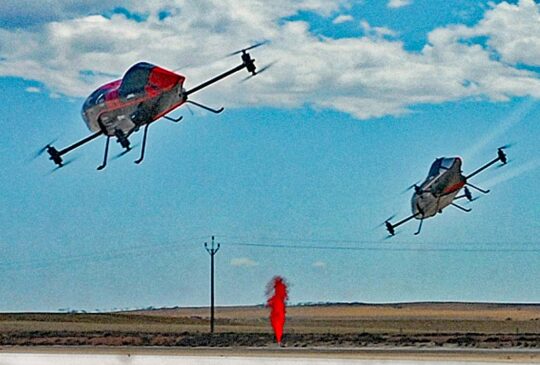 Alauda's all-electric aircraft, which is expected to have a range of 25 miles and a Part 103-compliant top speed of 63 mph, could be used for tasks such as inspecting crops and rounding up livestock, goals similar to those expressed by Ryse Aero.
So few facts are available that it is impossible to evaluate if Alauda can meet
Alauda's all-electric aircraft, which is expected to have a range of 25 miles and a Part 103-compliant top speed of 63 mph, could be used for tasks such as inspecting crops and rounding up livestock, goals similar to those expressed by Ryse Aero.
So few facts are available that it is impossible to evaluate if Alauda can meet 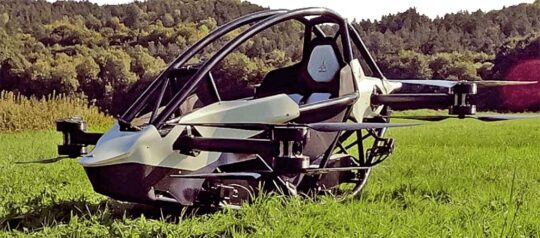 Jetson reported their Jetson One is "built to comply with existing FAA regulations," though they don't state which rule. We presume Part 103 as anything higher on the certification scheme is not yet ready for market. However, unlike Lift and Opener, they have not reached out to LAMA for TSC confirmation.
Whatever their long-term strategy, Jetson said this, "The entire 2022 and 2023 production is sold out, but we are accepting orders for 2024 delivery." Whoa! Sold out through this year? According to their website, this translates to 226 units ordered. Not bad before the first shipment has been made.
Jetson reported their Jetson One is "built to comply with existing FAA regulations," though they don't state which rule. We presume Part 103 as anything higher on the certification scheme is not yet ready for market. However, unlike Lift and Opener, they have not reached out to LAMA for TSC confirmation.
Whatever their long-term strategy, Jetson said this, "The entire 2022 and 2023 production is sold out, but we are accepting orders for 2024 delivery." Whoa! Sold out through this year? According to their website, this translates to 226 units ordered. Not bad before the first shipment has been made.
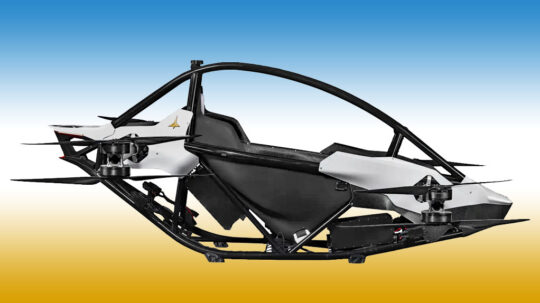 What will one of these machines set you back? "A down payment of $22,000 is required [at the time of ordering]. A final payment of $70,000 when your Jetson One is ready for delivery at the factory." Does $92,000 sound affordable to you?
To see what I've had to say about Jetson before,
What will one of these machines set you back? "A down payment of $22,000 is required [at the time of ordering]. A final payment of $70,000 when your Jetson One is ready for delivery at the factory." Does $92,000 sound affordable to you?
To see what I've had to say about Jetson before, 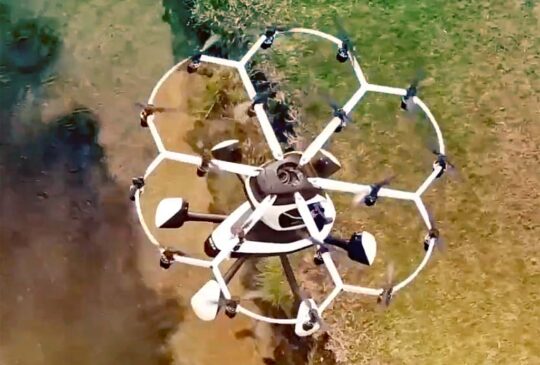 Distance and location are also computer controlled and that's perfect for Lift's initial plan.
You don't care how much this one costs (it would be over $300,000, they suggest) because Lift doesn't plan to sell it to you. They will rent it at one of their "vertiports." Planning several around the country, you can show up, pay the fee, sign the waiver, and take an hour's instruction before you go fly your own Hexa solo, for your first-ever multicopter flight. The aircraft will be geo-fenced to contain its lateral movement and a safety pilot will stand by to take over if you somehow manage to overwhelm the computer controls.
I'll tell you what… if Lift offers a flight near me, I'll do it. Will you?
Distance and location are also computer controlled and that's perfect for Lift's initial plan.
You don't care how much this one costs (it would be over $300,000, they suggest) because Lift doesn't plan to sell it to you. They will rent it at one of their "vertiports." Planning several around the country, you can show up, pay the fee, sign the waiver, and take an hour's instruction before you go fly your own Hexa solo, for your first-ever multicopter flight. The aircraft will be geo-fenced to contain its lateral movement and a safety pilot will stand by to take over if you somehow manage to overwhelm the computer controls.
I'll tell you what… if Lift offers a flight near me, I'll do it. Will you?
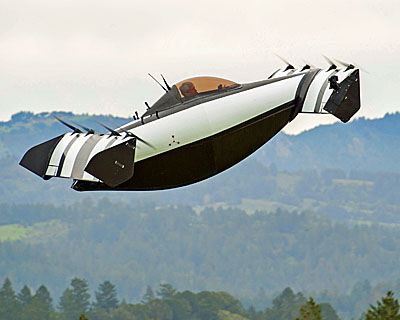 "Traffic congestion and long commutes are two leading causes of stress and reduction in quality of life," believes Opener. "Countless hours are wasted on roads each day, idling in traffic, time that could be better spent with family and friends." Who can argue yet range anxiety and a lack of experience flying this unorthodox aircraft may hold back buyers. That's OK as it is often "early adopters" that start the trend.
"Our vehicles are intended to liberate the public from the restrictions of two-dimensional road travel by opening up a new world of untethered three-dimensional flight," said Opener. "Compact and simple, our vehicles are pioneering a new era of stress-free travel."
Do you want to commute to work in your BlackFly? If it arrives on market as promised for the price of "luxury SUV," that might mean your commuter aircraft will sell for under $100,000. If so, would you consider that affordable?
Here's
"Traffic congestion and long commutes are two leading causes of stress and reduction in quality of life," believes Opener. "Countless hours are wasted on roads each day, idling in traffic, time that could be better spent with family and friends." Who can argue yet range anxiety and a lack of experience flying this unorthodox aircraft may hold back buyers. That's OK as it is often "early adopters" that start the trend.
"Our vehicles are intended to liberate the public from the restrictions of two-dimensional road travel by opening up a new world of untethered three-dimensional flight," said Opener. "Compact and simple, our vehicles are pioneering a new era of stress-free travel."
Do you want to commute to work in your BlackFly? If it arrives on market as promised for the price of "luxury SUV," that might mean your commuter aircraft will sell for under $100,000. If so, would you consider that affordable?
Here's 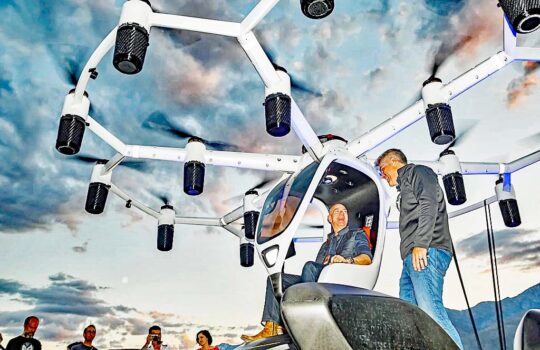
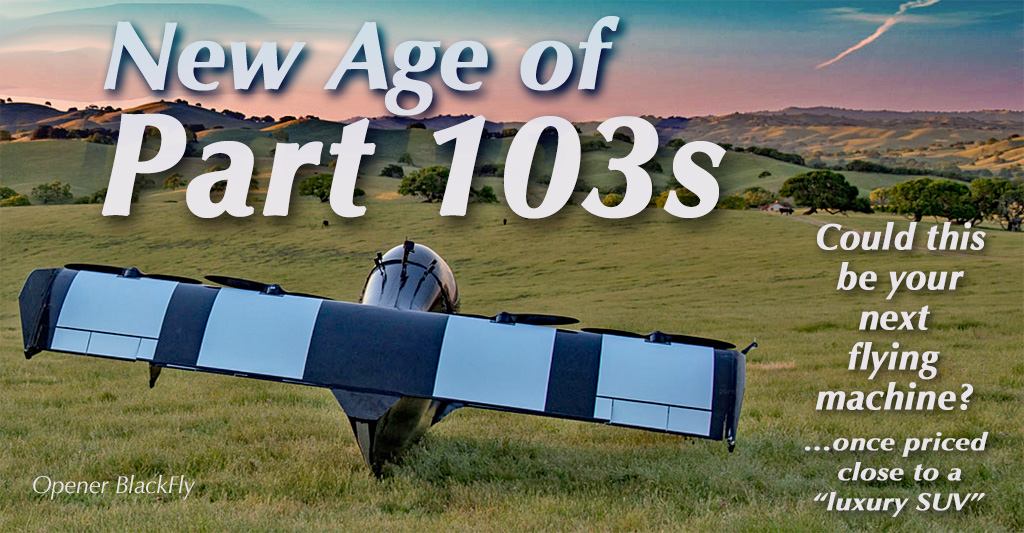
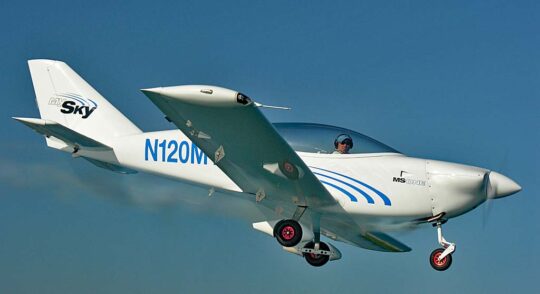 For the past few years that torrid pace slowed… just as it has in every other industry I've examined. However, in aviation it is uncommon for a good airplane to actually disappear forever. Designs worth their avgas often manage a come-back, a term meant to show a return to market for a flying machine some may have written off earlier.
Here is such a story.
For the past few years that torrid pace slowed… just as it has in every other industry I've examined. However, in aviation it is uncommon for a good airplane to actually disappear forever. Designs worth their avgas often manage a come-back, a term meant to show a return to market for a flying machine some may have written off earlier.
Here is such a story.
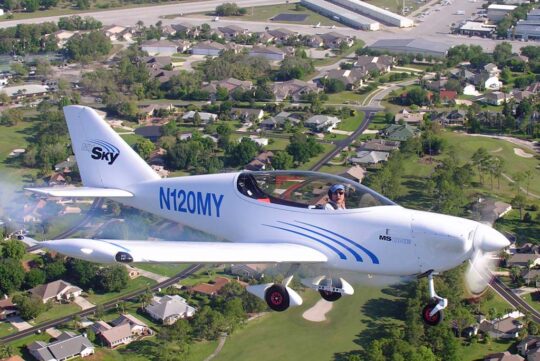 One thing MS-1 did not have going for it: the design arrived to the party amidst so many other new designs that it was easy to get lost in the crowd. Proprietor and principal investor Dieter Canje wisely set the project aside while the dust cleared.
Now it's back and with a splurge of innovation planned.
One thing MS-1 did not have going for it: the design arrived to the party amidst so many other new designs that it was easy to get lost in the crowd. Proprietor and principal investor Dieter Canje wisely set the project aside while the dust cleared.
Now it's back and with a splurge of innovation planned.
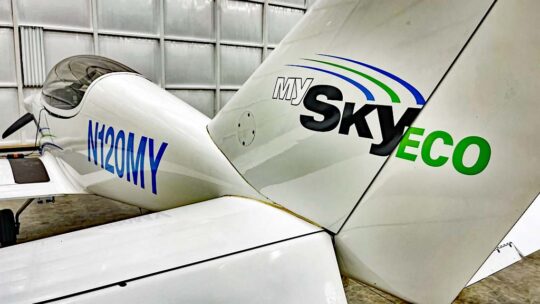 "MySky MS-1 is making a comeback, with an ecological twist," said Dieter. "We believed our MySky MS-1 was a promising light aircraft project about 10, 12 years ago. Unfortunately, MySky Aircraft never made any efforts to put the model into production."
The backstory is worth exploring. Let's answer a few questions.
"MySky MS-1 is making a comeback, with an ecological twist," said Dieter. "We believed our MySky MS-1 was a promising light aircraft project about 10, 12 years ago. Unfortunately, MySky Aircraft never made any efforts to put the model into production."
The backstory is worth exploring. Let's answer a few questions.
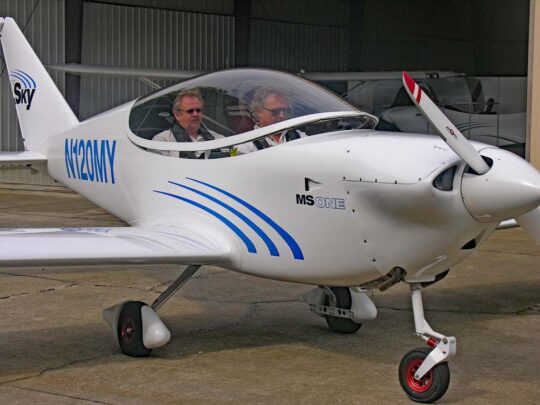 Why did you not put MySky MS-1 in production in 2010?
Why did you not put MySky MS-1 in production in 2010?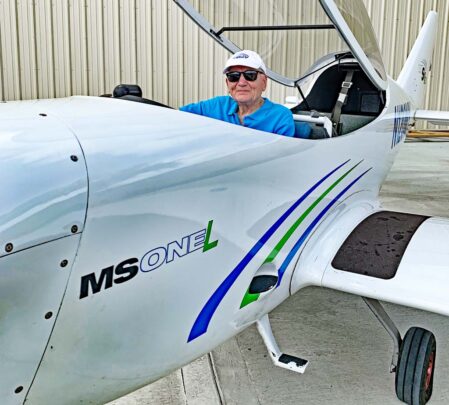 "In 2015, we formed MySky Eco with the intent to modify MS-1 into an electric aircraft," Dieter said. "But we found that the time was not ready yet. Even now, endurance and range limits its use to flight training. However, there is strong demand in this market segment."
"In 2022, environmental concerns are taken much more seriously by a large percentage of the general population," believes Dieter. "If we in the aviation industry, be it light or commercial aviation, cannot demonstrate that we are doing our part to mitigate our environmental impact, we will run into problems. It is in our own interest to do something to reduce the environmental footprint of aviation as soon as we can."
This is where MySky ECO, Inc., comes into play with a 5-step program with the final goal to create a totally emission-free aircraft.
"In 2015, we formed MySky Eco with the intent to modify MS-1 into an electric aircraft," Dieter said. "But we found that the time was not ready yet. Even now, endurance and range limits its use to flight training. However, there is strong demand in this market segment."
"In 2022, environmental concerns are taken much more seriously by a large percentage of the general population," believes Dieter. "If we in the aviation industry, be it light or commercial aviation, cannot demonstrate that we are doing our part to mitigate our environmental impact, we will run into problems. It is in our own interest to do something to reduce the environmental footprint of aviation as soon as we can."
This is where MySky ECO, Inc., comes into play with a 5-step program with the final goal to create a totally emission-free aircraft.
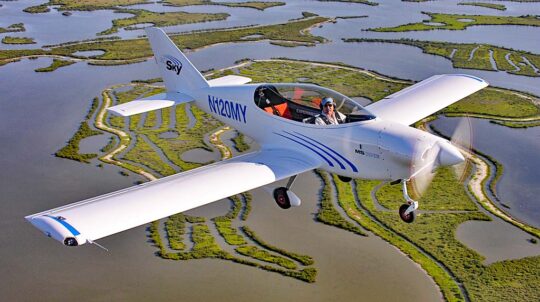 What is MySkyECO MS-1L?
What is MySkyECO MS-1L?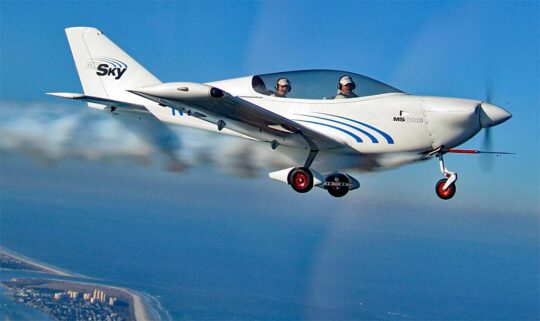 Can a tandem aircraft be used for flight training?
Can a tandem aircraft be used for flight training?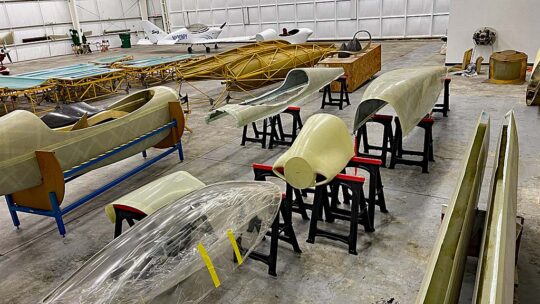
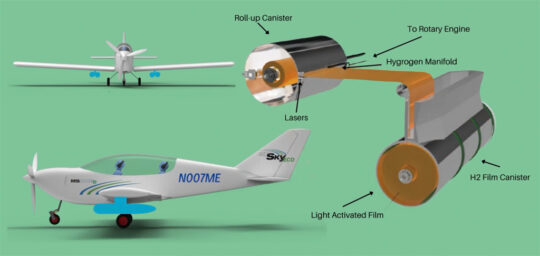 Electric has appeal but a method of extending range on an electric airplane would be useful for longer missions than flight training. "We are working on a range extender based on the rotary engine concept, using Jet-A," said MySky.
"Our
Electric has appeal but a method of extending range on an electric airplane would be useful for longer missions than flight training. "We are working on a range extender based on the rotary engine concept, using Jet-A," said MySky.
"Our 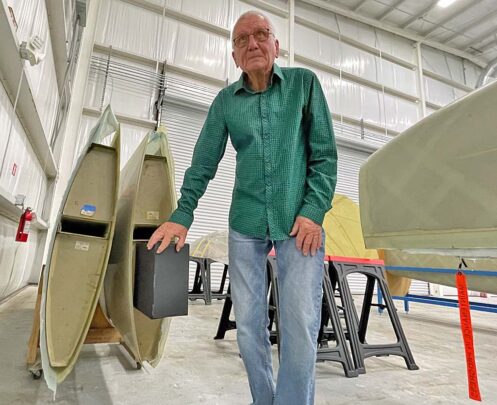
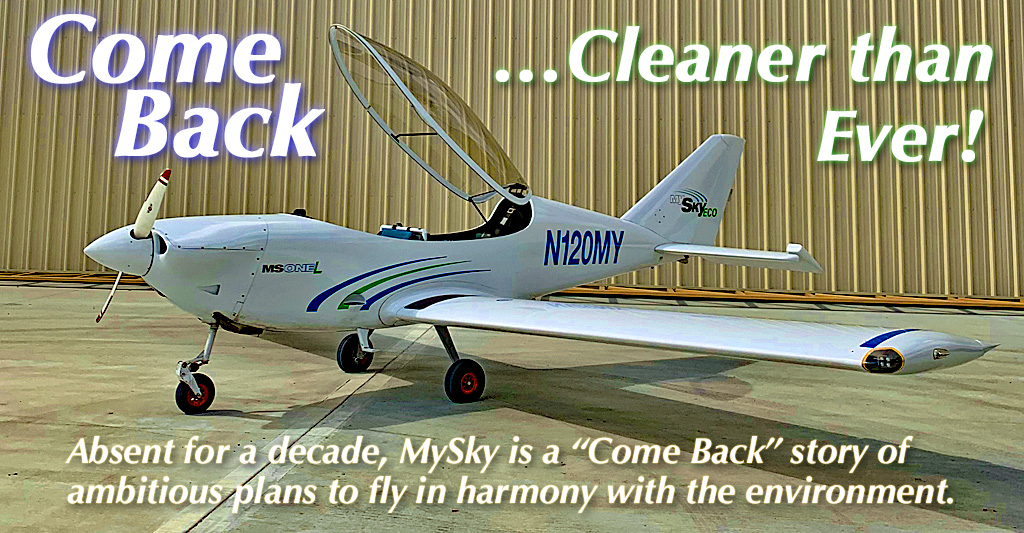
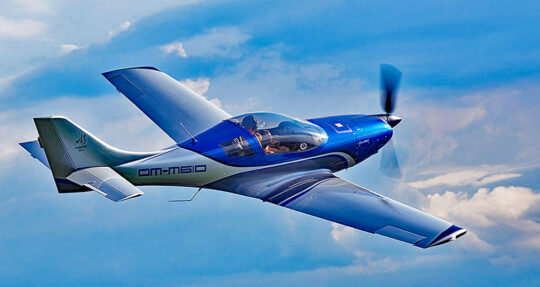 Aircraft seen in nearby images is the VL3, a plane formerly designed by Vanessa Air and produced by Aveko. Americans first came to know a variation of this model as the
Aircraft seen in nearby images is the VL3, a plane formerly designed by Vanessa Air and produced by Aveko. Americans first came to know a variation of this model as the 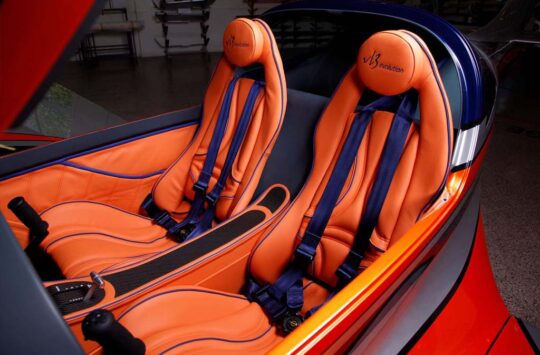 Add another three years taking us to 2015 and JMB began fully producing the fuselage and wings, work that had previously been subcontracted. Today, JMB Aircraft is in full production at their Chocen, Czech Republic facility.
Since JMB's brand arrived in America in 2016, the company has continued to refine their models, upgrading engines to the fuel-injected Rotax 912iS and the 141-horsepower Rotax 915iS. Most recently JMB has been experimenting with the TurboTech turbine engine (
Add another three years taking us to 2015 and JMB began fully producing the fuselage and wings, work that had previously been subcontracted. Today, JMB Aircraft is in full production at their Chocen, Czech Republic facility.
Since JMB's brand arrived in America in 2016, the company has continued to refine their models, upgrading engines to the fuel-injected Rotax 912iS and the 141-horsepower Rotax 915iS. Most recently JMB has been experimenting with the TurboTech turbine engine (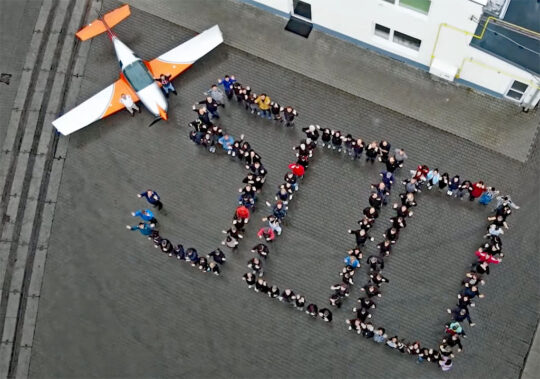 CEO Jean Marie Guisset gathered and addressed all JMB Aircraft employees (nearby image) and said, “This is another unique landmark for JMB. We are improving our product every single day, and the biggest thank you goes to all of you who are standing here, because you are the ones who make it happen.”
“I am honored to be a guest at this special event," said the customer. "The VL3 is an amazing aircraft and the people here make a very special aviation product. You can mark down my words, I will be delighted to put my order through for aircraft serial number #1000!” That may only take a few more years.
The company reported it has been speeding up the production on an annual basis, and expects to deliver more than 70 aircraft in 2022, a fine performance any light aircraft producer could envy. In the meantime, JMB's substantial production facility is expanding production capacity to accommodate a new project, the four-seater, turbine-powered Evolution. In a happy coincidence, the larger aircraft shares its name with JMB's own two-seat VL3 Evolution).
CEO Jean Marie Guisset gathered and addressed all JMB Aircraft employees (nearby image) and said, “This is another unique landmark for JMB. We are improving our product every single day, and the biggest thank you goes to all of you who are standing here, because you are the ones who make it happen.”
“I am honored to be a guest at this special event," said the customer. "The VL3 is an amazing aircraft and the people here make a very special aviation product. You can mark down my words, I will be delighted to put my order through for aircraft serial number #1000!” That may only take a few more years.
The company reported it has been speeding up the production on an annual basis, and expects to deliver more than 70 aircraft in 2022, a fine performance any light aircraft producer could envy. In the meantime, JMB's substantial production facility is expanding production capacity to accommodate a new project, the four-seater, turbine-powered Evolution. In a happy coincidence, the larger aircraft shares its name with JMB's own two-seat VL3 Evolution).
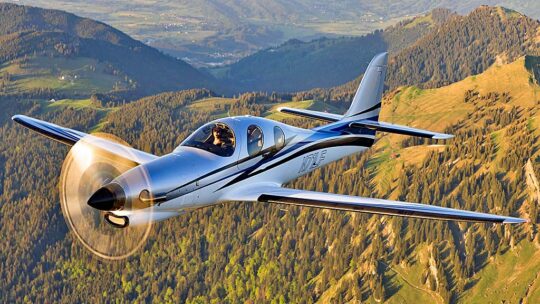 A well-evolved design, Evolution is a 250-knot-cruise aircraft that can climb 4,000 feet per minute powered by its Pratt & Whitney turbine powerplant. About 100 of these cabin-class speedsters are flying around the world.
“We have had discussions with Jean-Marie for over four years about the possibility of joining forces. This year I finally visited the production facility in Chocen, Czech and was quite impressed by what I saw,“ said Wolstenholme who leads Evolution Aircraft as its CEO.
A well-evolved design, Evolution is a 250-knot-cruise aircraft that can climb 4,000 feet per minute powered by its Pratt & Whitney turbine powerplant. About 100 of these cabin-class speedsters are flying around the world.
“We have had discussions with Jean-Marie for over four years about the possibility of joining forces. This year I finally visited the production facility in Chocen, Czech and was quite impressed by what I saw,“ said Wolstenholme who leads Evolution Aircraft as its CEO.
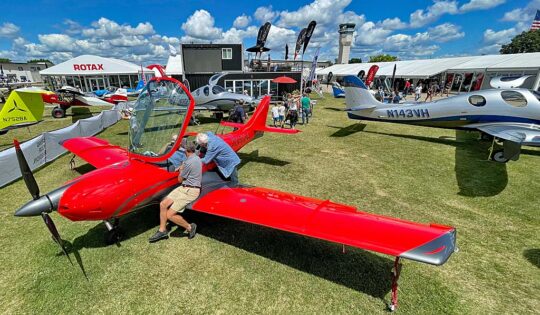 At this year's AirVenture Oshkosh, the two companies exhibited together (image), giving them a good venue to launch their fresh collaboration. Officially, JMB will take over the production of the Evolution at their facility in Czech Republic, as well as help with the sales and marketing. The part of Evolution Aircraft based in the United States will handle research & development and provide services and maintenance.
Jean-Marie said he has long thought about making a mini
At this year's AirVenture Oshkosh, the two companies exhibited together (image), giving them a good venue to launch their fresh collaboration. Officially, JMB will take over the production of the Evolution at their facility in Czech Republic, as well as help with the sales and marketing. The part of Evolution Aircraft based in the United States will handle research & development and provide services and maintenance.
Jean-Marie said he has long thought about making a mini 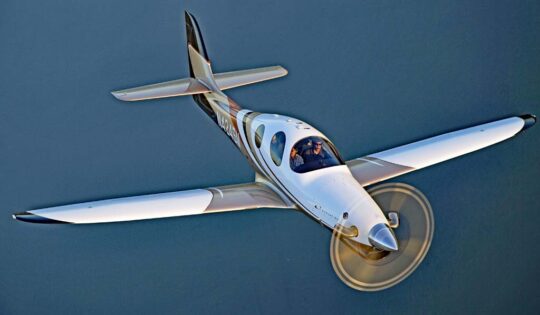 Both companies are passionate about their aircraft, each extreme speedsters in their class. It would appear a well-considered and sound collaboration.
As Mosaic will eventually demonstrate, I believe, we're about to see a major expansion at the lighter end of aviation. However, we are already seeing the maturing of the ultralight to LSA marketplace. Get ready for an exciting future. One company you'll want to keep an eye on is JMB Aircraft.
Both companies are passionate about their aircraft, each extreme speedsters in their class. It would appear a well-considered and sound collaboration.
As Mosaic will eventually demonstrate, I believe, we're about to see a major expansion at the lighter end of aviation. However, we are already seeing the maturing of the ultralight to LSA marketplace. Get ready for an exciting future. One company you'll want to keep an eye on is JMB Aircraft.
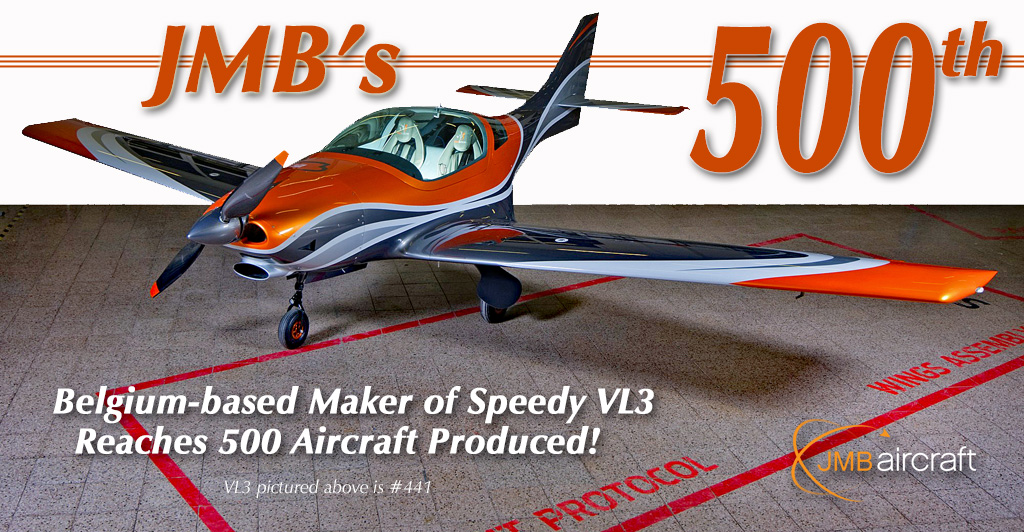
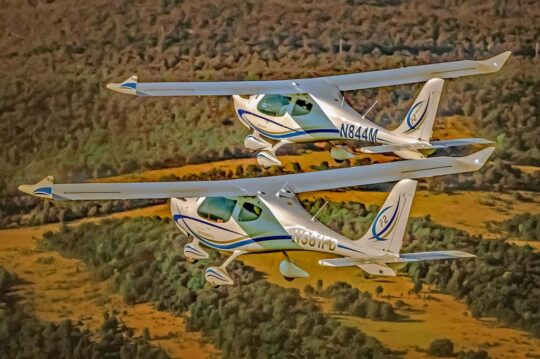 In the middle of the last decade, long before Putin's aggression, LSA market leader Flight Design went through a German-imposed reorganization. While difficult, the company emerged stronger and more stable.
In development through this challenging time, Flight Design unveiled their new F-series, starting with their two-seat LSA F2 model at Aero Friedrichshafen 2019. They also displayed an F2e powered by electric motor. Those who examined these displays could readily see the spacious fuselage was built with a four seater in mind for the future. Things were progressing well…
In the middle of the last decade, long before Putin's aggression, LSA market leader Flight Design went through a German-imposed reorganization. While difficult, the company emerged stronger and more stable.
In development through this challenging time, Flight Design unveiled their new F-series, starting with their two-seat LSA F2 model at Aero Friedrichshafen 2019. They also displayed an F2e powered by electric motor. Those who examined these displays could readily see the spacious fuselage was built with a four seater in mind for the future. Things were progressing well…
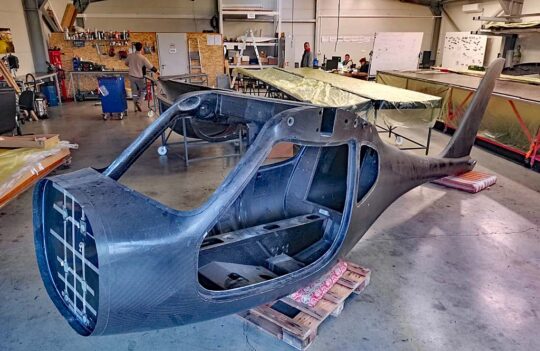
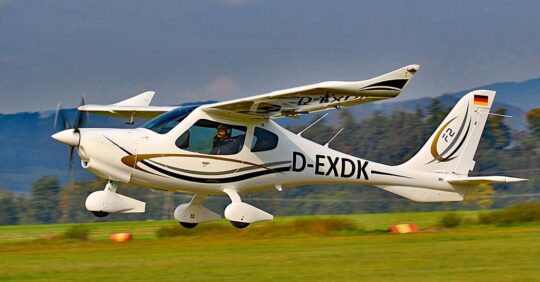 Despite such hardships, Flight Design's German leaders and team closed ranks and moved production to Šumperk, Czech Republic, near the country's northern border with Poland, about 100 miles east of Prague.
“[The company is using] a new, 25,000-square-foot site suitable for use as a production and paint shop,” reported longtime importer, Tom Peghiny in an article from AOPA. The company had been doing some development work in Czech and now expanded their footprint to take up manufacturing. This represented a huge effort under the most trying — and dangerous — of conditions.
The accompanying images show elements of the work to establish a new production facility. Since most molds and other tooling could not be removed from Kherson to Šumperk — about 1,000 miles to the west — the company had to acquire new production jigs and they had to do this while supply lines were pinched, shipping costs were sky-high, and interest rates were rising on funds needed to create a new manufacturing plant.
Despite such hardships, Flight Design's German leaders and team closed ranks and moved production to Šumperk, Czech Republic, near the country's northern border with Poland, about 100 miles east of Prague.
“[The company is using] a new, 25,000-square-foot site suitable for use as a production and paint shop,” reported longtime importer, Tom Peghiny in an article from AOPA. The company had been doing some development work in Czech and now expanded their footprint to take up manufacturing. This represented a huge effort under the most trying — and dangerous — of conditions.
The accompanying images show elements of the work to establish a new production facility. Since most molds and other tooling could not be removed from Kherson to Šumperk — about 1,000 miles to the west — the company had to acquire new production jigs and they had to do this while supply lines were pinched, shipping costs were sky-high, and interest rates were rising on funds needed to create a new manufacturing plant.
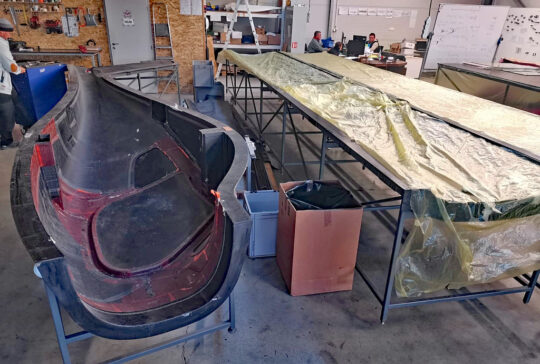
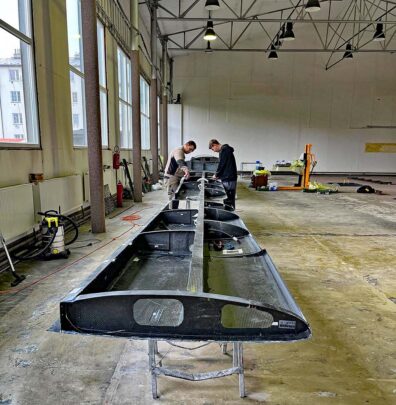
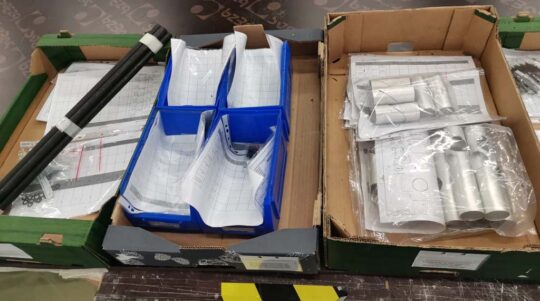
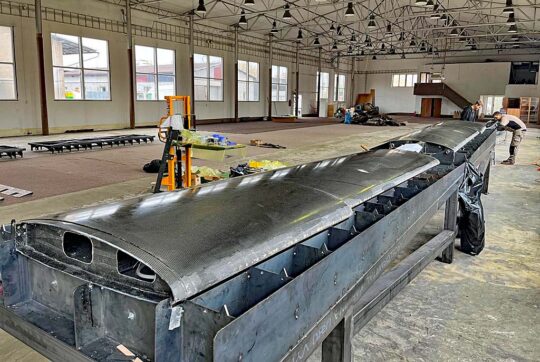
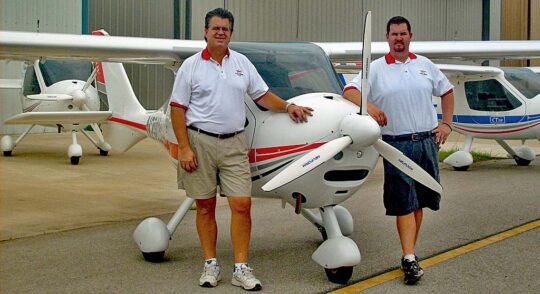
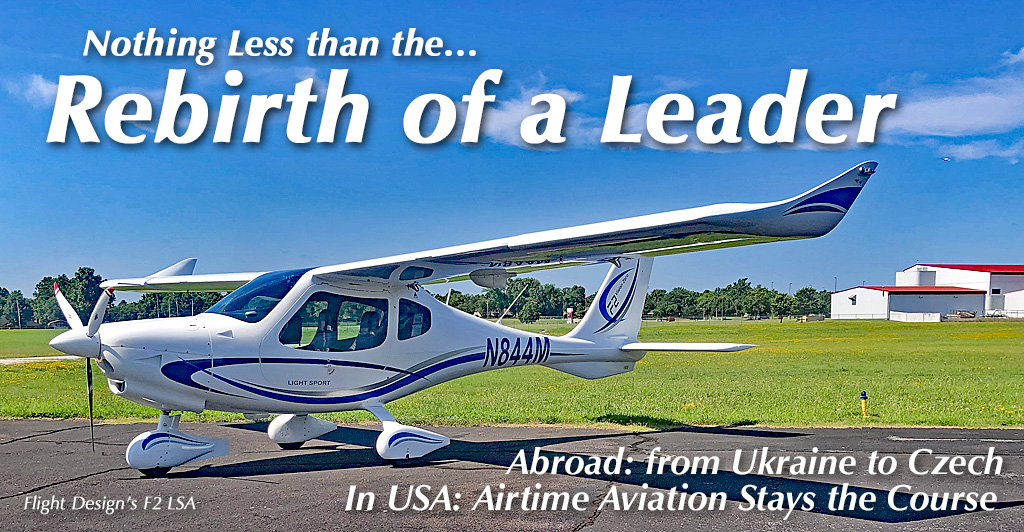
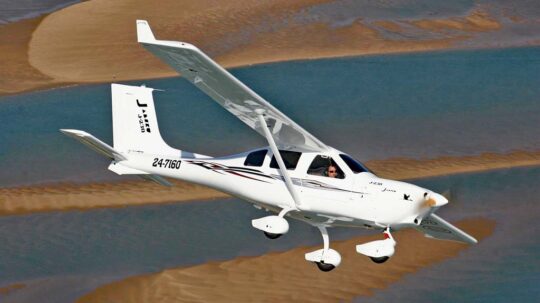 In light aviation, we have a roughly similar situation. Rotax provides somewhere around 70-80% of all engines for aircraft in the light aircraft space globally. The remaining 20-30% is divided between Continental or Titan, Jabiru, ULPower, and a growing collection of converted auto engines (though the latter, without ASTM approval, are used only on kit aircraft or ELSAs).
In light aviation, we have a roughly similar situation. Rotax provides somewhere around 70-80% of all engines for aircraft in the light aircraft space globally. The remaining 20-30% is divided between Continental or Titan, Jabiru, ULPower, and a growing collection of converted auto engines (though the latter, without ASTM approval, are used only on kit aircraft or ELSAs).
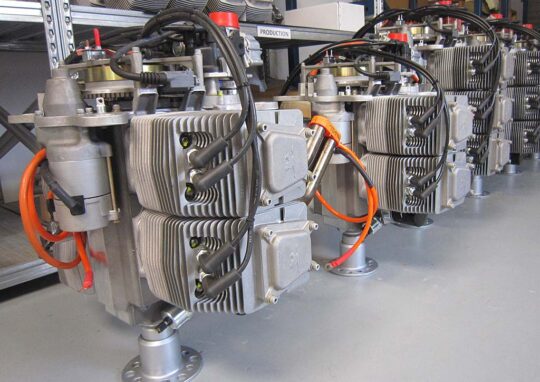 So, Jabiru may not be #1, but the "down-under" company achieved a significant benchmark when they shipped number 4,000 of the 2200 series. Jabiru's 3300 six-cylinder 120-horsepower model is well past 3,000 engines shipped. Therefore, almost 8,000 airplane owners are carried into the sky by Jabiru. Contrasted to the entire American LSA, ELSA, Sport Pilot kit-built aircraft fleet of almost 10,000 aircraft (see
So, Jabiru may not be #1, but the "down-under" company achieved a significant benchmark when they shipped number 4,000 of the 2200 series. Jabiru's 3300 six-cylinder 120-horsepower model is well past 3,000 engines shipped. Therefore, almost 8,000 airplane owners are carried into the sky by Jabiru. Contrasted to the entire American LSA, ELSA, Sport Pilot kit-built aircraft fleet of almost 10,000 aircraft (see 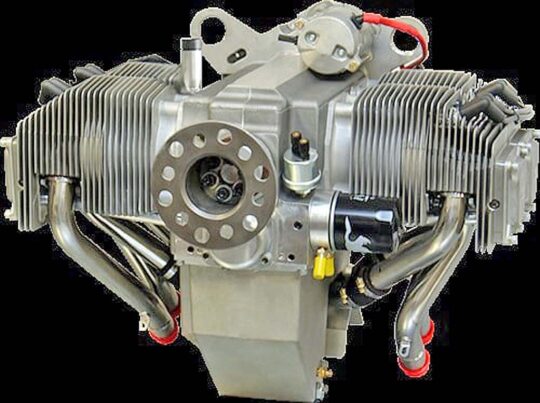
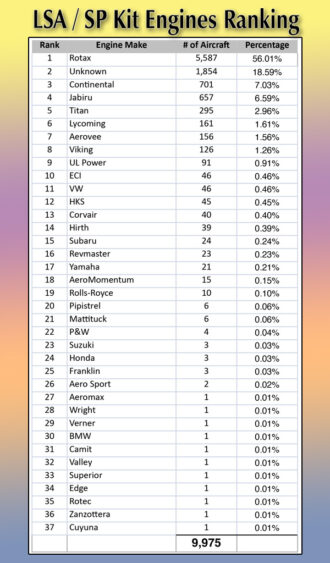
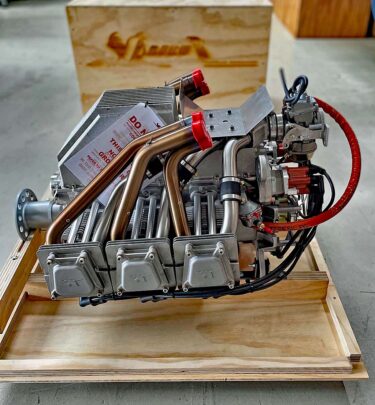 If you are puzzled, as I was, by the #2-ranked Unknown listing, here is Steve's response: "The 'Unknown' refers to aircraft where the FAA data is blank in respect to the engine. Presumably, these aircraft have engines, but the FAA doesn't know what kind. This is a data-quality problem common to all databases. No database of any size ever has perfectly clean and complete data, contrary to what people assume."
"I was surprised to find 'Pipistrel' engines," Steve also wrote. Pipistrel makes airframes and then installs Rotax or other engines into them, don't they? Well, yes, that's been most of their history. Yet in recent years Pipistrel has engaged deeply in electric-powered aircraft and this data has begun to creep into our comprehensive review. (Choosing to pursue electric power appears to have been a shrewd move as Textron paid a boatload of money [more than $200 million, it has been reported!] to acquire the Slovenian company, allegedly mainly for its pioneering work in electric propulsion.)
If you are puzzled, as I was, by the #2-ranked Unknown listing, here is Steve's response: "The 'Unknown' refers to aircraft where the FAA data is blank in respect to the engine. Presumably, these aircraft have engines, but the FAA doesn't know what kind. This is a data-quality problem common to all databases. No database of any size ever has perfectly clean and complete data, contrary to what people assume."
"I was surprised to find 'Pipistrel' engines," Steve also wrote. Pipistrel makes airframes and then installs Rotax or other engines into them, don't they? Well, yes, that's been most of their history. Yet in recent years Pipistrel has engaged deeply in electric-powered aircraft and this data has begun to creep into our comprehensive review. (Choosing to pursue electric power appears to have been a shrewd move as Textron paid a boatload of money [more than $200 million, it has been reported!] to acquire the Slovenian company, allegedly mainly for its pioneering work in electric propulsion.)
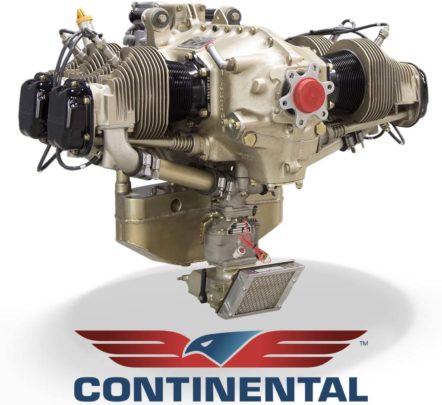 "These Pipistrel powerplant entries are for electric-powered aircraft as the
"These Pipistrel powerplant entries are for electric-powered aircraft as the 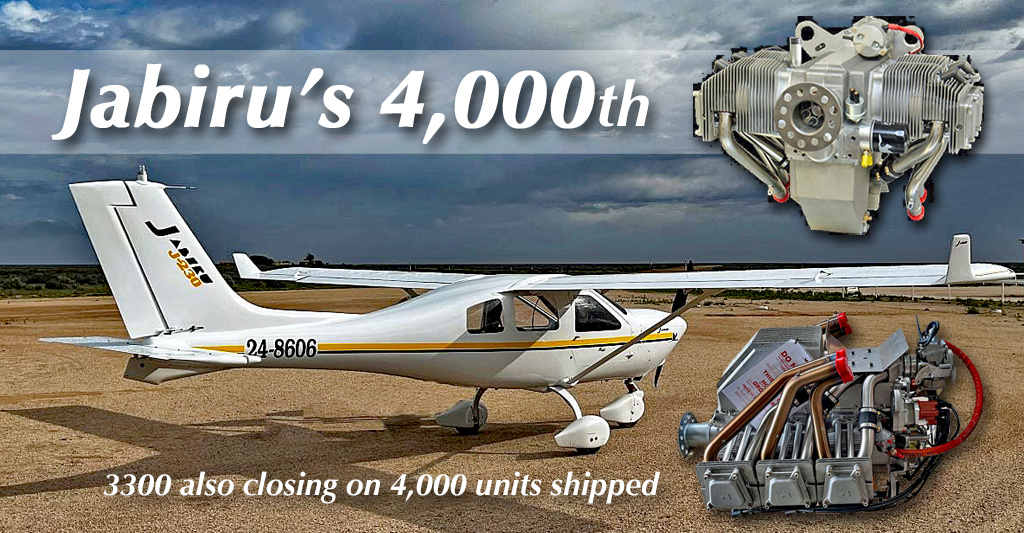
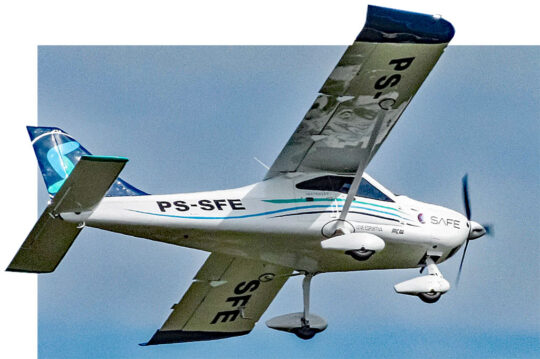 Other powerful engines are available, for example, the even-higher-horsepower Titan from
Other powerful engines are available, for example, the even-higher-horsepower Titan from 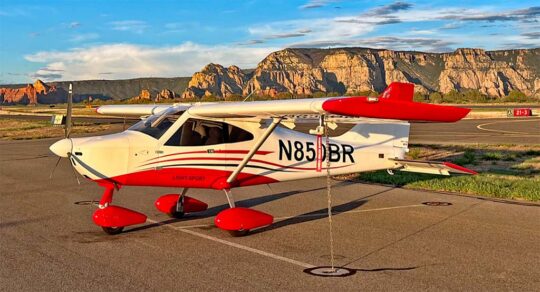 Although no one is saying it today, I perceive that his is a smart play to prepare for Mosaic LSA. Given a cabin that has already accommodated four seats and three doors to serve all those seats, adding an engine powerful enough to carry four makes Montaer a shoe-in to offer such a model in 2025 after the new regulation should emerge.
Indeed, as several conversations I had at Aero Showcase 2022 demonstrated, pilots are asking questions like this: "If I bought this Montaer and flew it for a couple years, could the company 'upgrade' it to Mosaic and let me add four seats?" The short answer is "Yes, very possibly." Since a very similar design has already flown in Brazil with four seats, it seems likely that Montaer can declare the aircraft at a new weight and go forward offering a rear seat "kit." All that is theoretically possible under ASTM standards, but we must wait until FAA issues their Notice of Proposed Rulemaking (NPRM), expected in August of 2023.
Although no one is saying it today, I perceive that his is a smart play to prepare for Mosaic LSA. Given a cabin that has already accommodated four seats and three doors to serve all those seats, adding an engine powerful enough to carry four makes Montaer a shoe-in to offer such a model in 2025 after the new regulation should emerge.
Indeed, as several conversations I had at Aero Showcase 2022 demonstrated, pilots are asking questions like this: "If I bought this Montaer and flew it for a couple years, could the company 'upgrade' it to Mosaic and let me add four seats?" The short answer is "Yes, very possibly." Since a very similar design has already flown in Brazil with four seats, it seems likely that Montaer can declare the aircraft at a new weight and go forward offering a rear seat "kit." All that is theoretically possible under ASTM standards, but we must wait until FAA issues their Notice of Proposed Rulemaking (NPRM), expected in August of 2023.
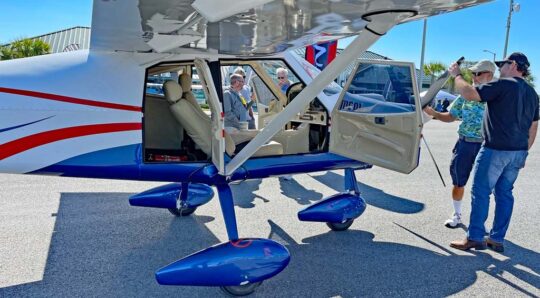 Montaer wrote, "[We have] the roomiest cockpit in the entire LSA category. Montaer MC-01 was originally designed as a four-seater aircraft in Brazil (when different regulations applied), therefore, the removal of the two back seats, with an existing third door, produces impressive room for cargo. Also [we offer plenty of] legroom for pilot and passenger." The company added a line that should work for lots of pilots: "No challenge for the big guys."
Pilots of any size will be well protected given Montaer's building methods. MC01 features a welded passenger safety cell with solid-metal rivet construction. The latter is much more time consuming than pulled rivets and is more familiar to those buying a Part 23-certified metal aircraft such as Cessna. In fact, overall, the yoke-controlled MC01 may remind pilots of the Cessna 172, to which it is often compared.
Montaer wrote, "[We have] the roomiest cockpit in the entire LSA category. Montaer MC-01 was originally designed as a four-seater aircraft in Brazil (when different regulations applied), therefore, the removal of the two back seats, with an existing third door, produces impressive room for cargo. Also [we offer plenty of] legroom for pilot and passenger." The company added a line that should work for lots of pilots: "No challenge for the big guys."
Pilots of any size will be well protected given Montaer's building methods. MC01 features a welded passenger safety cell with solid-metal rivet construction. The latter is much more time consuming than pulled rivets and is more familiar to those buying a Part 23-certified metal aircraft such as Cessna. In fact, overall, the yoke-controlled MC01 may remind pilots of the Cessna 172, to which it is often compared.
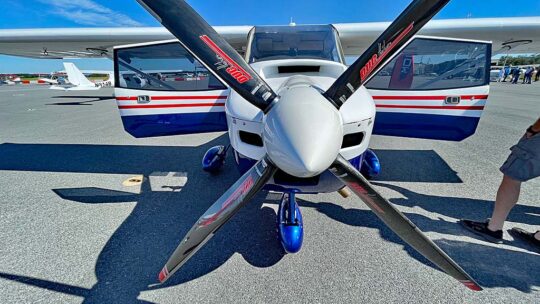 However, with the 915iS engine on a present-day LSA two seater, this bird is going to soar. Climb rate shown in the specification box nearby is for a 912iS-powered MC01. With another 41 horsepower, the "Monster Montaer" should shoot upwards like a homesick angel. If someone in a MC01 915 challenges your Skyhawk to a climb contest, don't take the bait. You'll lose… by a wide margin.
Still, for most pilots, the 912iS may be a great choice. It is several thousand dollars less, is lighter, lacks some of the 915iS's complexity (turbocharger and intercooler) and is much more fuel efficient (≈4 gallons per hour compared to 6-7 gallons per hour with the 915). Maintenance will also cost less and the 912iS is extremely well proven at this stage.
However, with the 915iS engine on a present-day LSA two seater, this bird is going to soar. Climb rate shown in the specification box nearby is for a 912iS-powered MC01. With another 41 horsepower, the "Monster Montaer" should shoot upwards like a homesick angel. If someone in a MC01 915 challenges your Skyhawk to a climb contest, don't take the bait. You'll lose… by a wide margin.
Still, for most pilots, the 912iS may be a great choice. It is several thousand dollars less, is lighter, lacks some of the 915iS's complexity (turbocharger and intercooler) and is much more fuel efficient (≈4 gallons per hour compared to 6-7 gallons per hour with the 915). Maintenance will also cost less and the 912iS is extremely well proven at this stage.
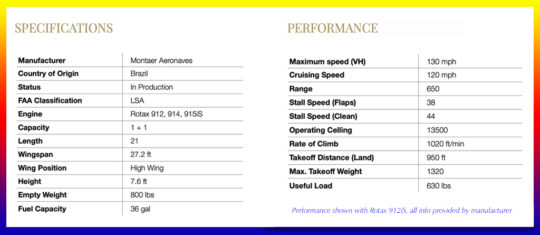 Before the Covid panic hit worldwide, Montaer was accepted by FAA as a Special LSA after the company verified that it had met all ASTM Standards for Light-Sport Aircraft. Shortly afterward, in 2021, Montaer established a presence at DeLand Municipal Airport, Florida airport by partnering with Shalom Confessor of the
Before the Covid panic hit worldwide, Montaer was accepted by FAA as a Special LSA after the company verified that it had met all ASTM Standards for Light-Sport Aircraft. Shortly afterward, in 2021, Montaer established a presence at DeLand Municipal Airport, Florida airport by partnering with Shalom Confessor of the 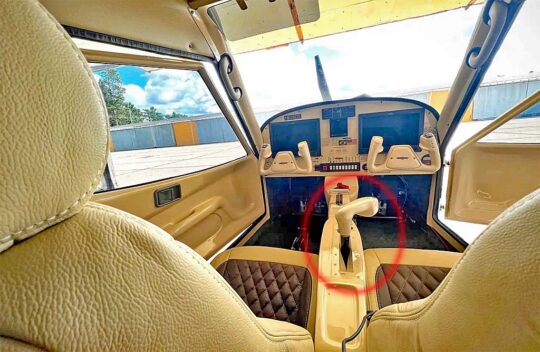 The reference is to an additional control added to allow pilots without the use of their legs to operate the MC01 (nearby image). Such pilots have a few choices but Montaer's entry is modern and handsome.
I posted a more detailed article about Montaer's hand control project. You can
The reference is to an additional control added to allow pilots without the use of their legs to operate the MC01 (nearby image). Such pilots have a few choices but Montaer's entry is modern and handsome.
I posted a more detailed article about Montaer's hand control project. You can 
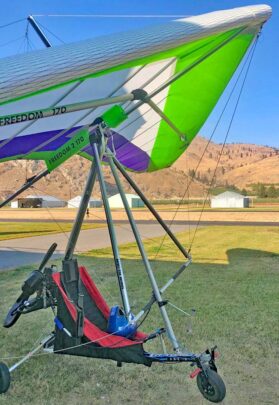 Is is even possible to fly an aircraft without all these advanced devices and services? Who would want such a simple aircraft?
You might be surprised. Over the years I've come to believe that Part 103 ultralights (see a
Is is even possible to fly an aircraft without all these advanced devices and services? Who would want such a simple aircraft?
You might be surprised. Over the years I've come to believe that Part 103 ultralights (see a 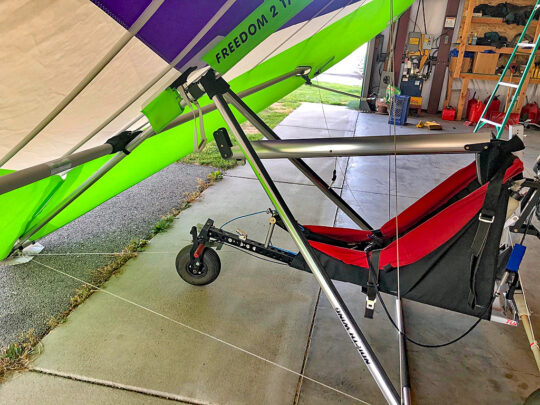
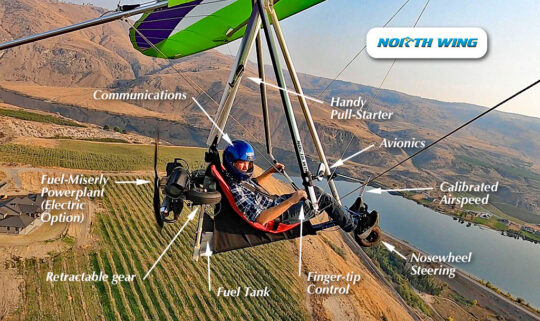
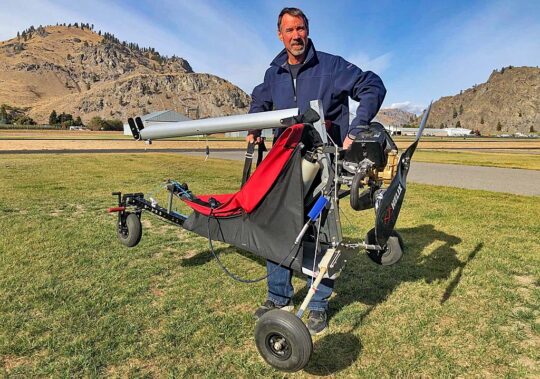
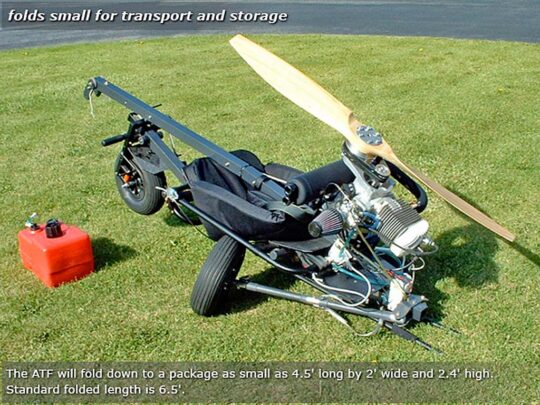 North Wing carefully prices everything they sell — from full-sized aircraft to small accessories — on their website. All shoppers can applaud such full disclosure while budget-conscious buyers especially appreciate the forthright way North Wing does business.
I've personally known founder and boss Kamron Blevins since we were both active in hang gliding. That goes back quite a ways and throughout I've found Kamron to be ambitious, honest, and innovative.
North Wing carefully prices everything they sell — from full-sized aircraft to small accessories — on their website. All shoppers can applaud such full disclosure while budget-conscious buyers especially appreciate the forthright way North Wing does business.
I've personally known founder and boss Kamron Blevins since we were both active in hang gliding. That goes back quite a ways and throughout I've found Kamron to be ambitious, honest, and innovative.
